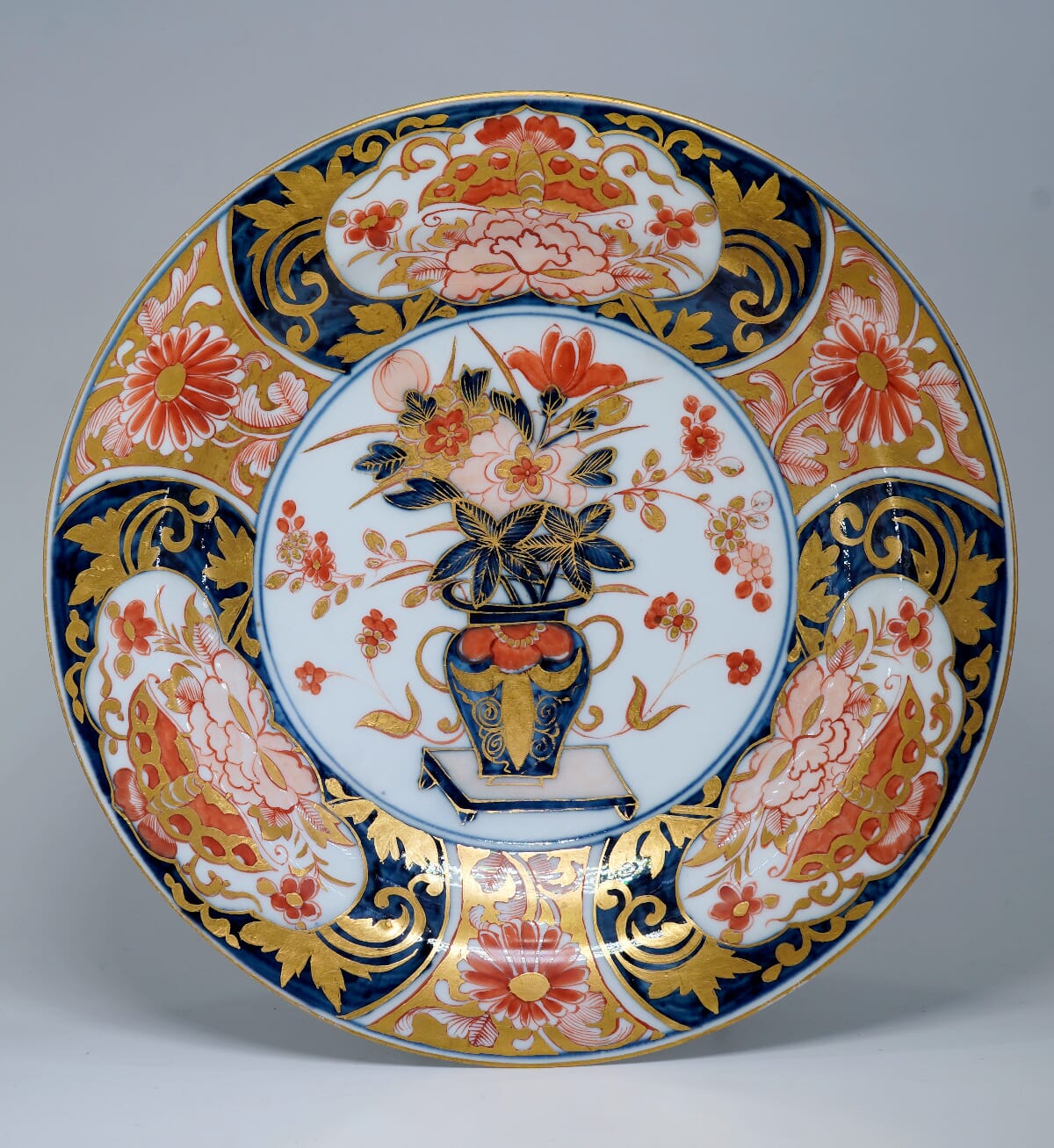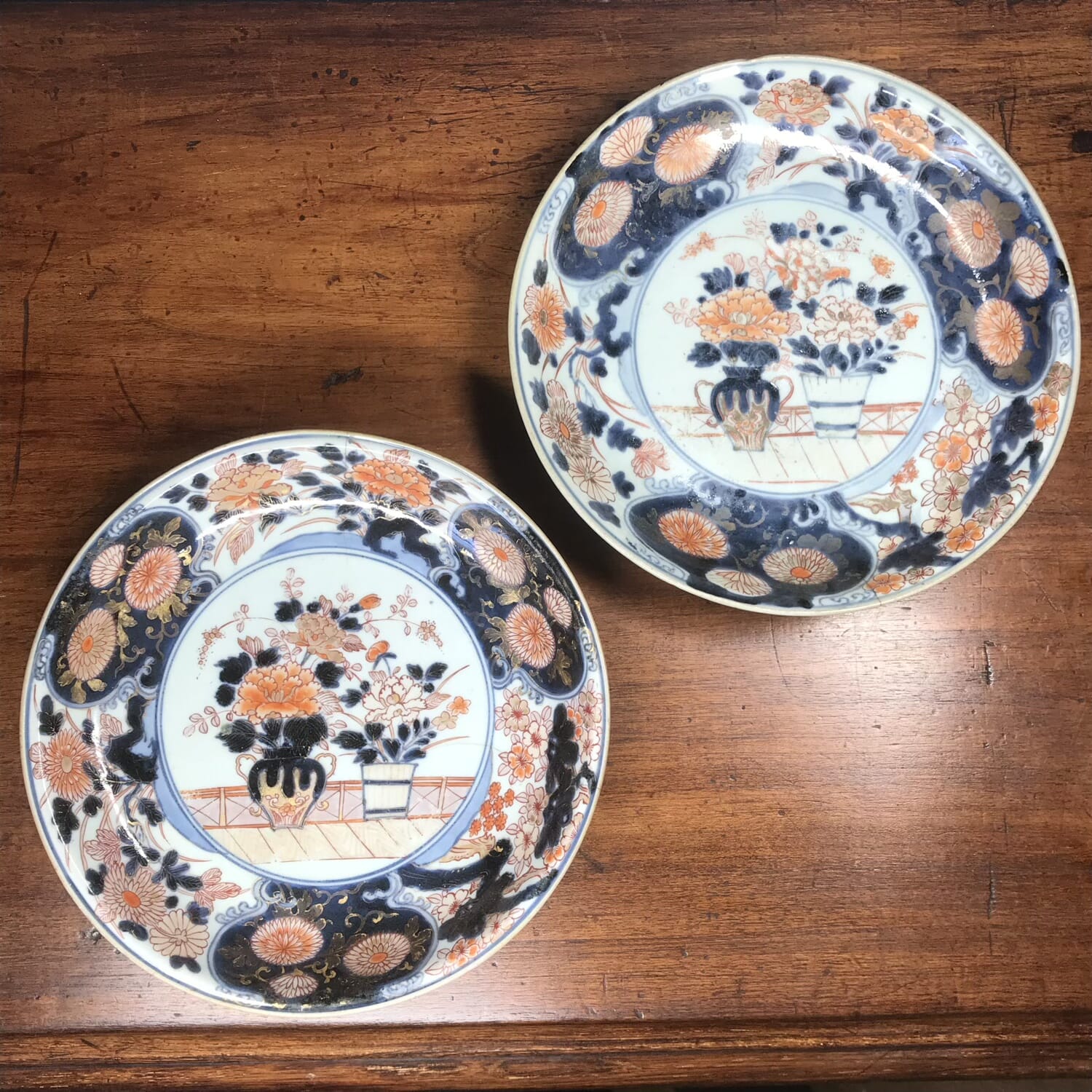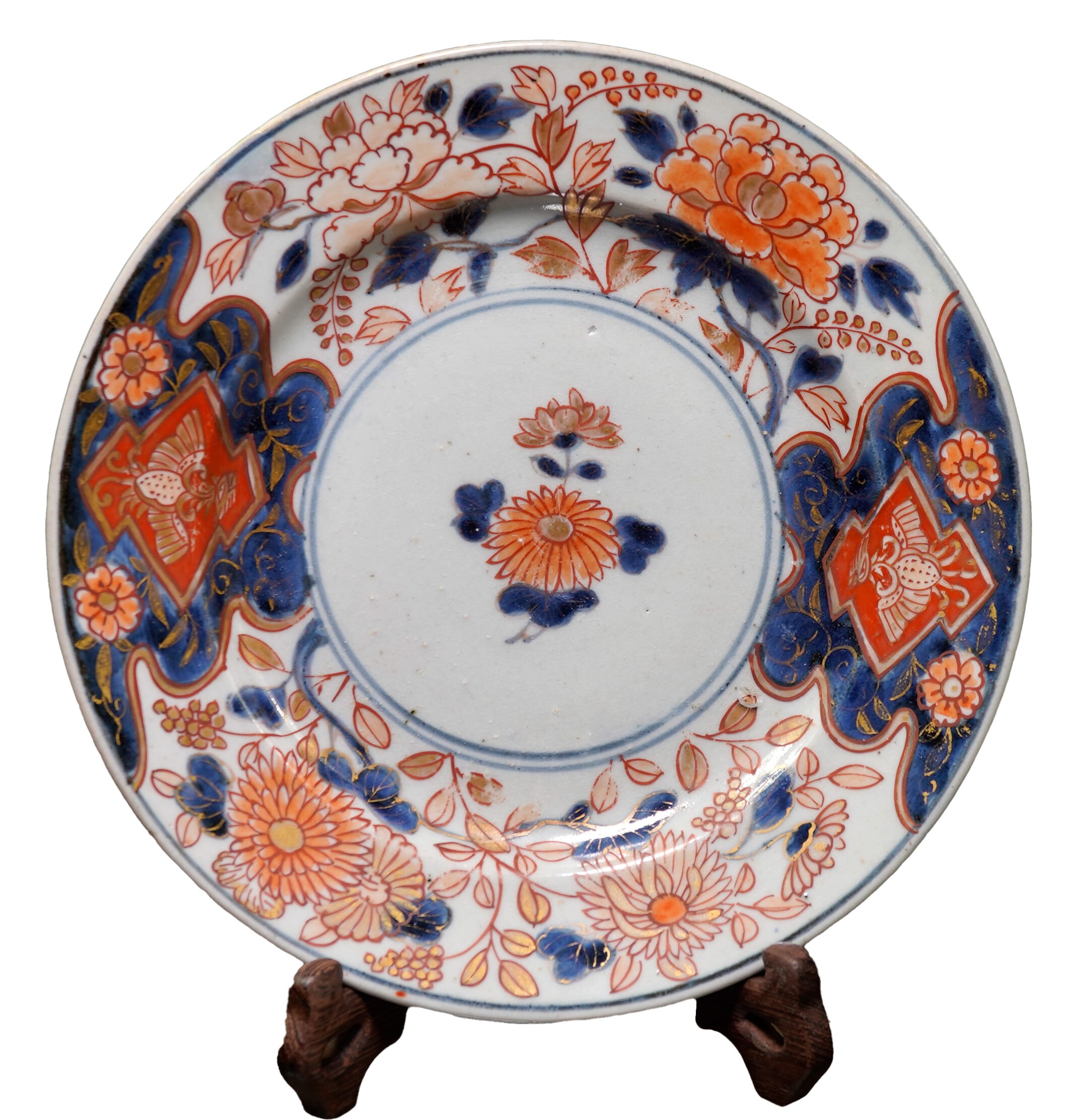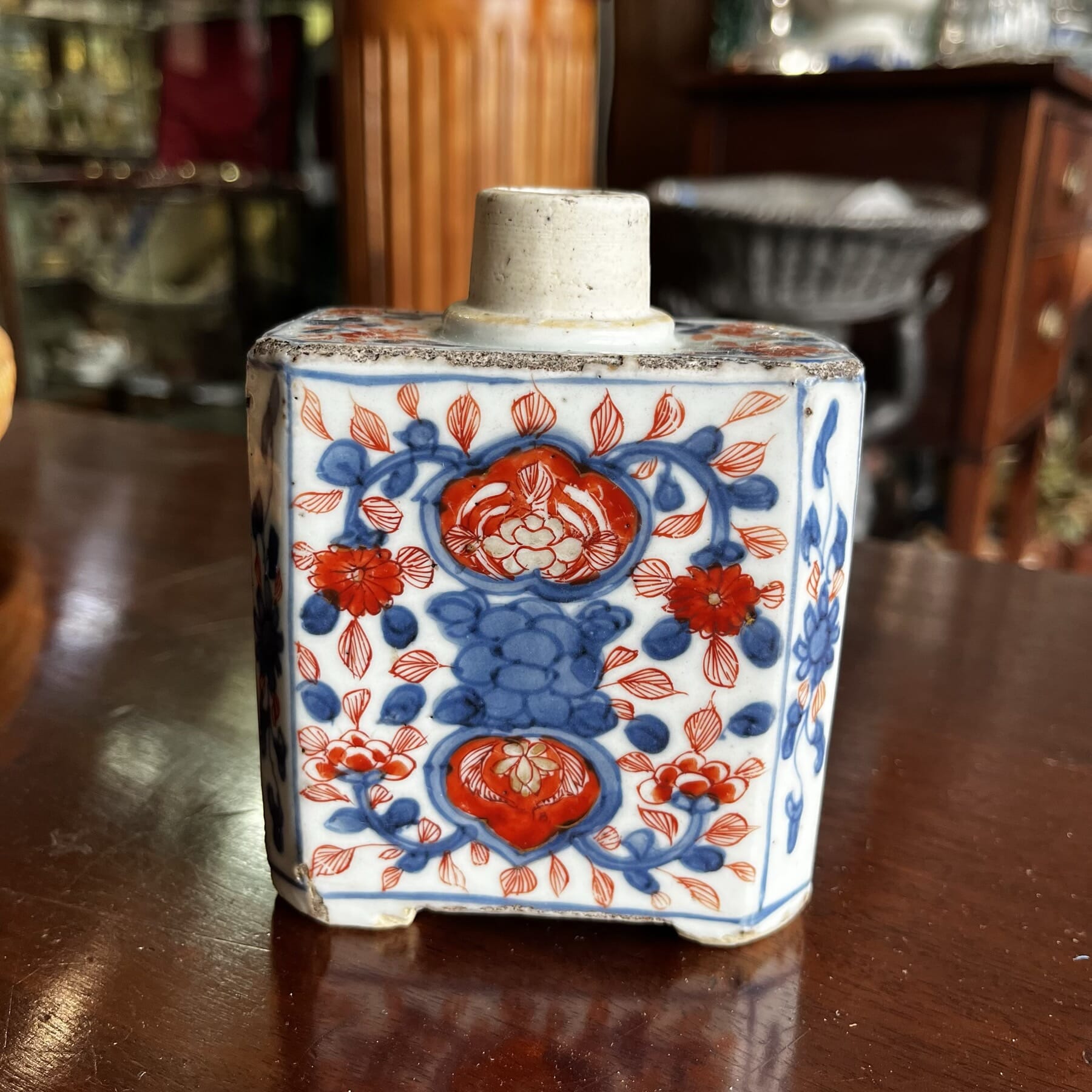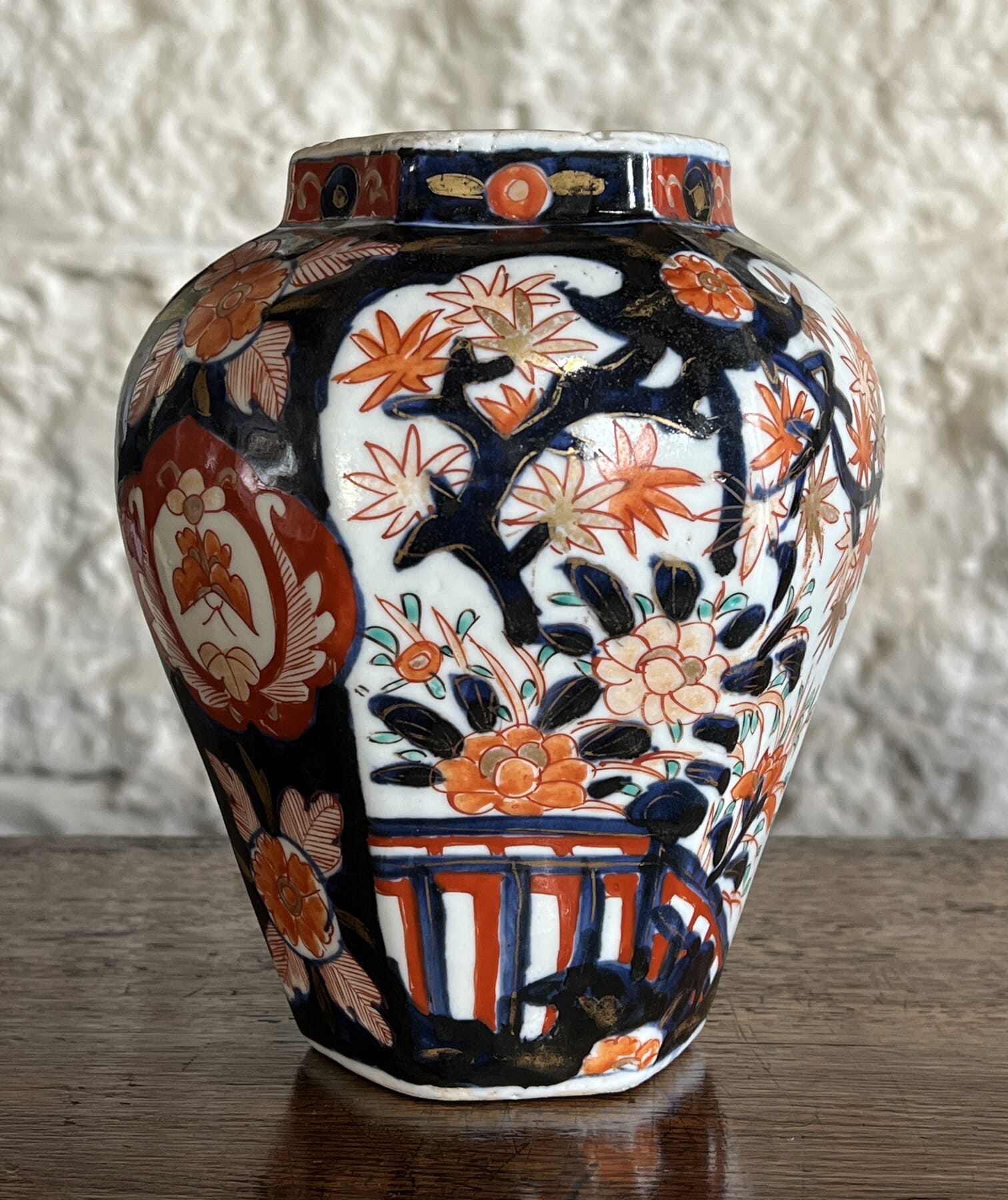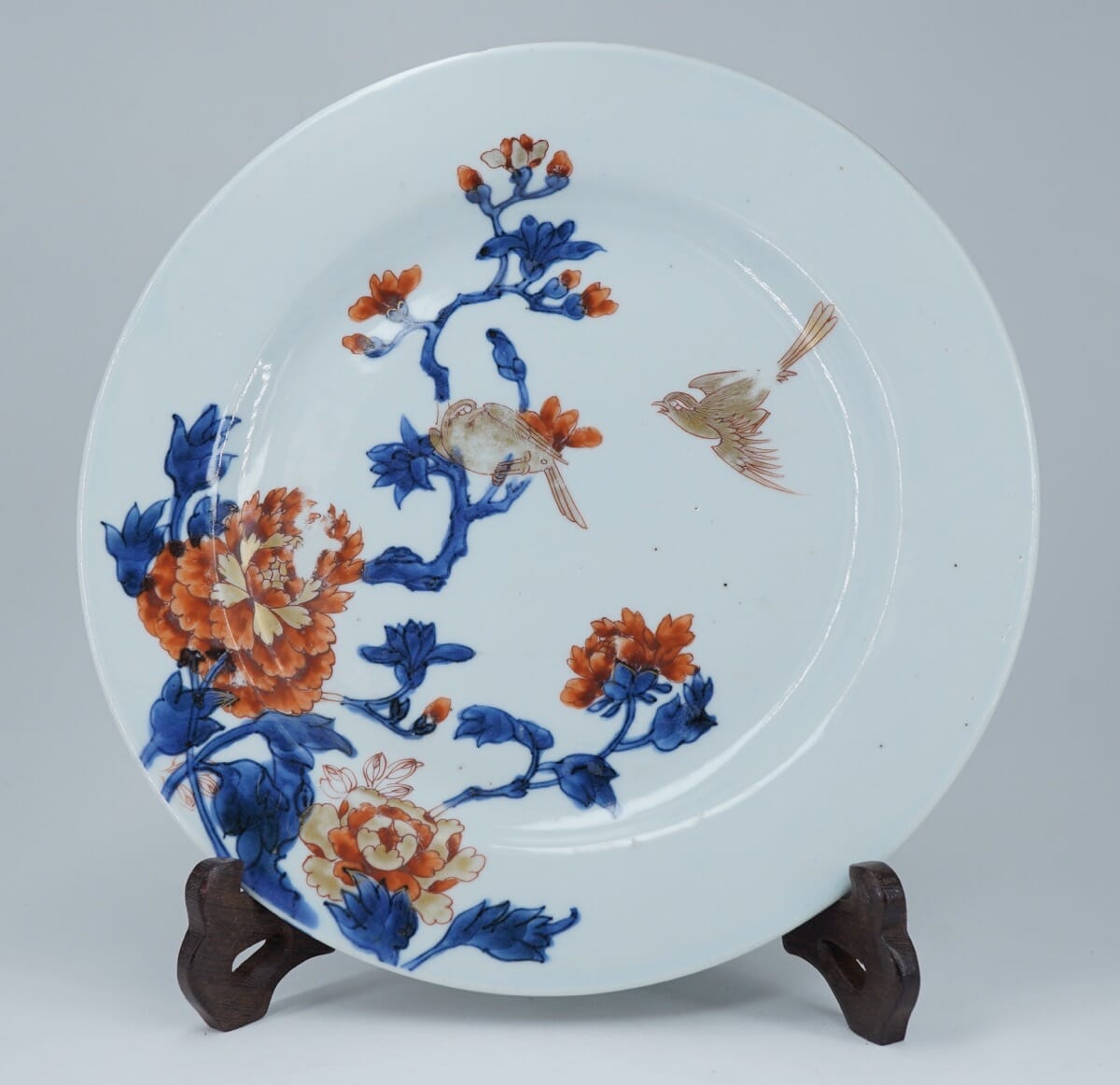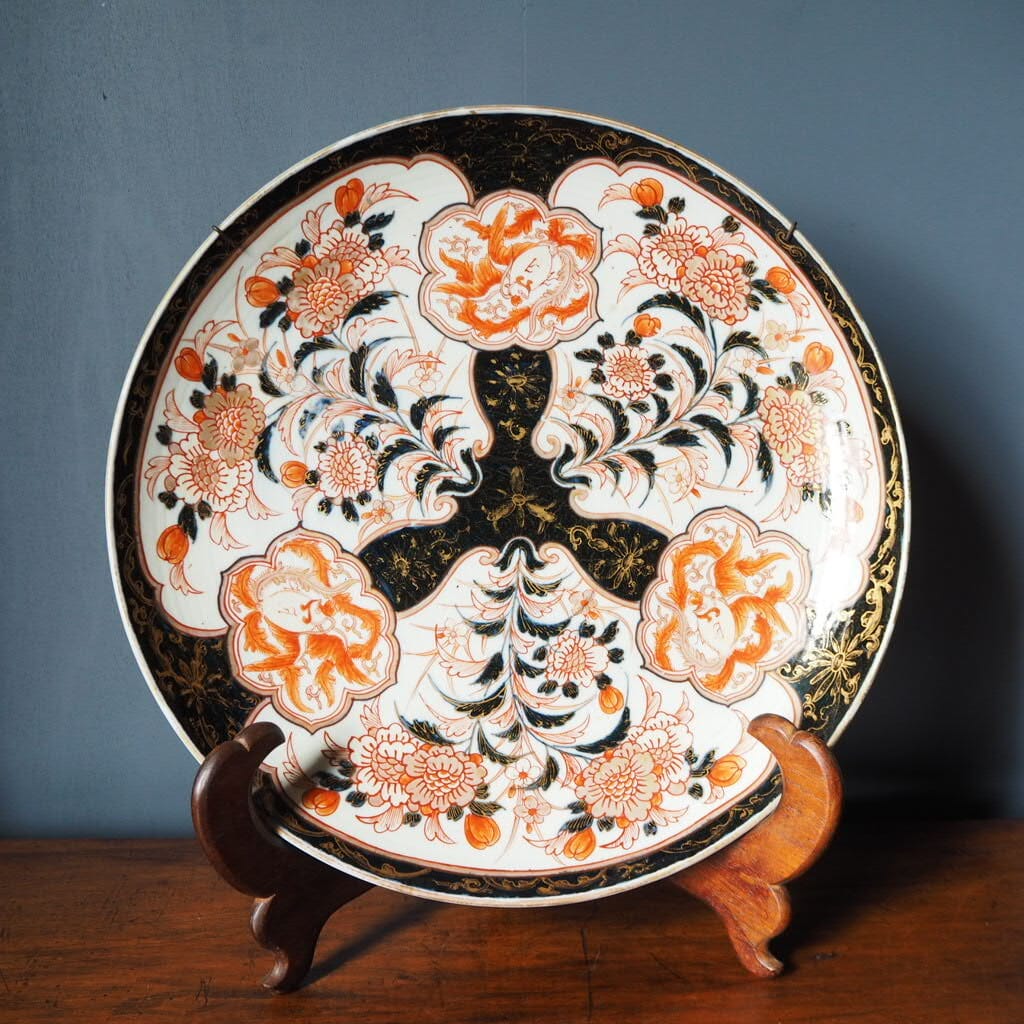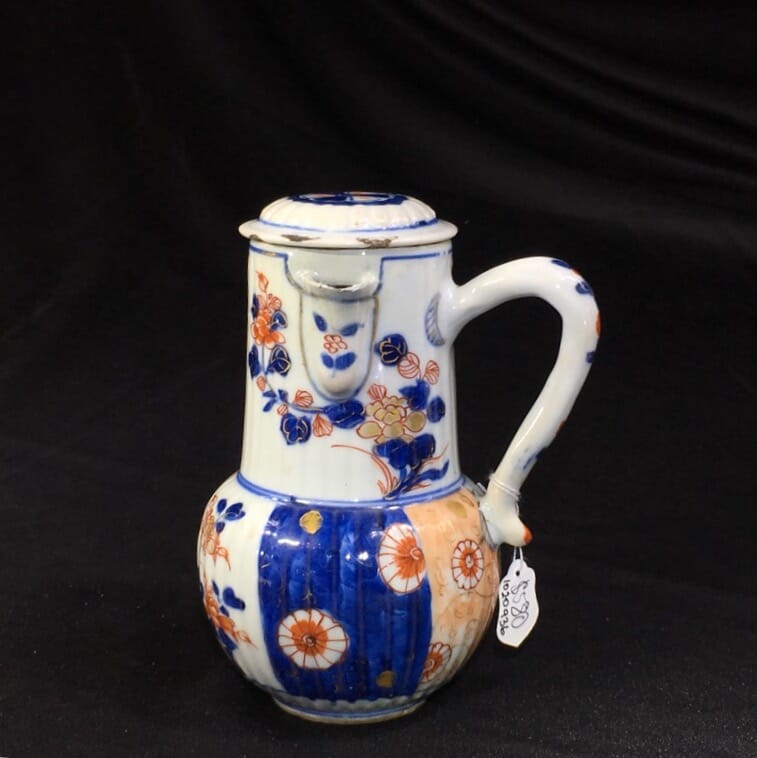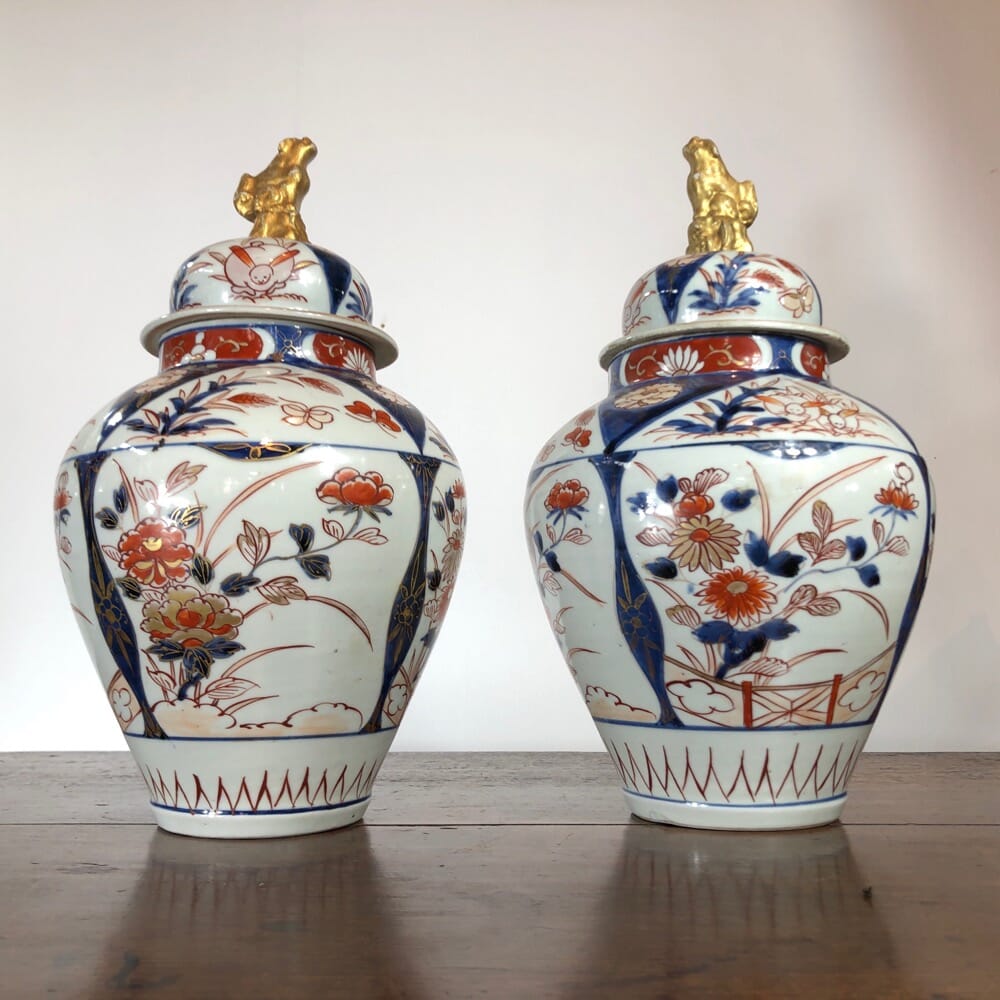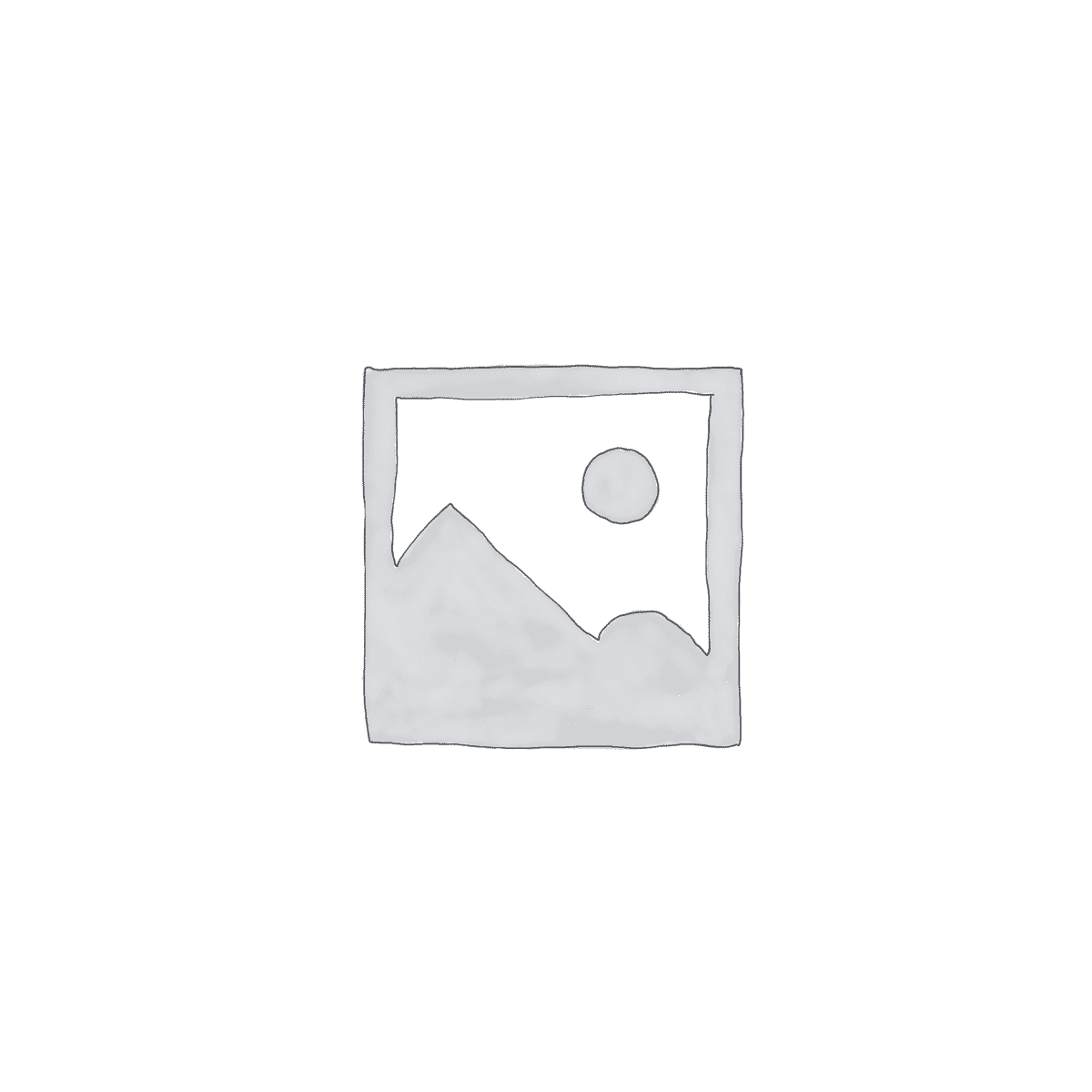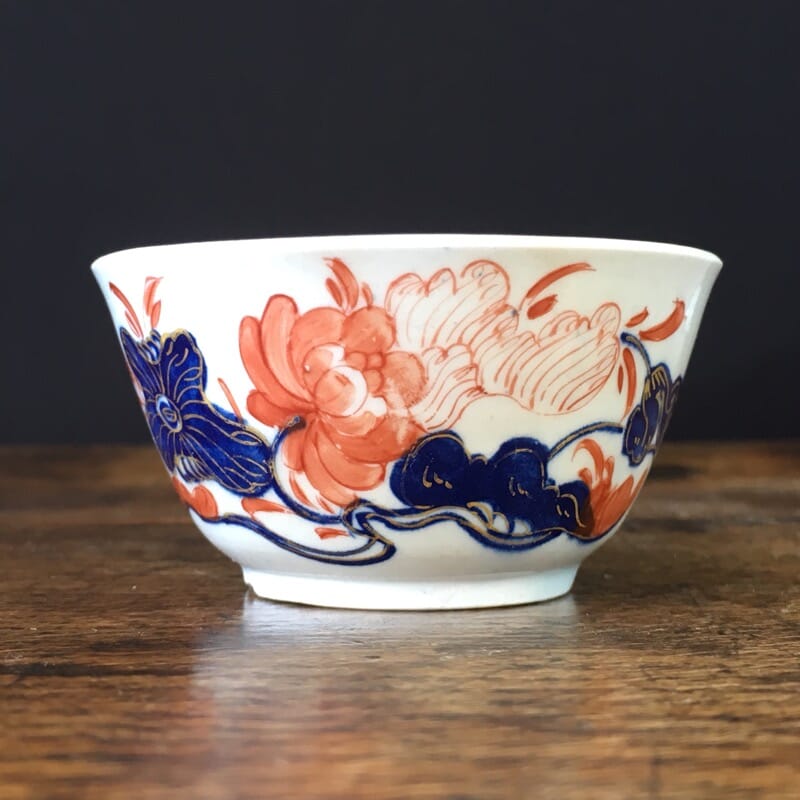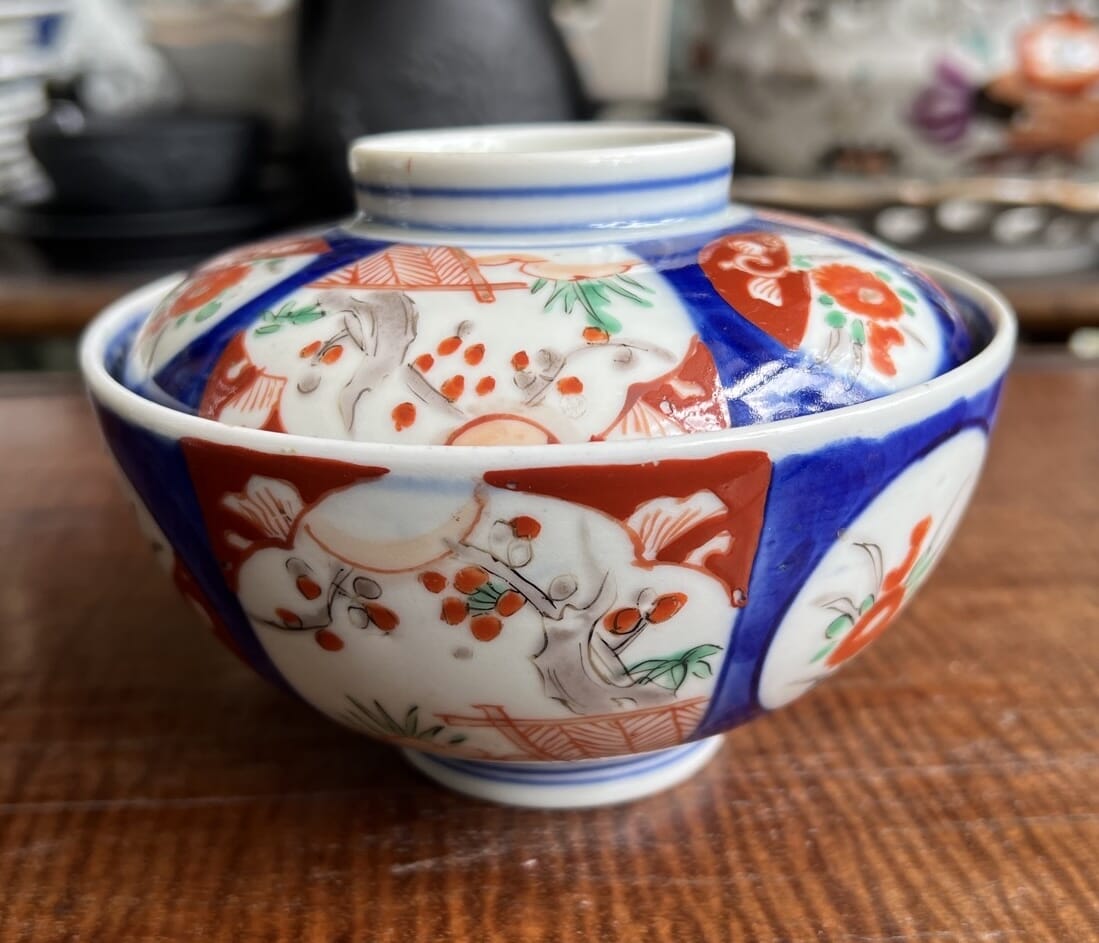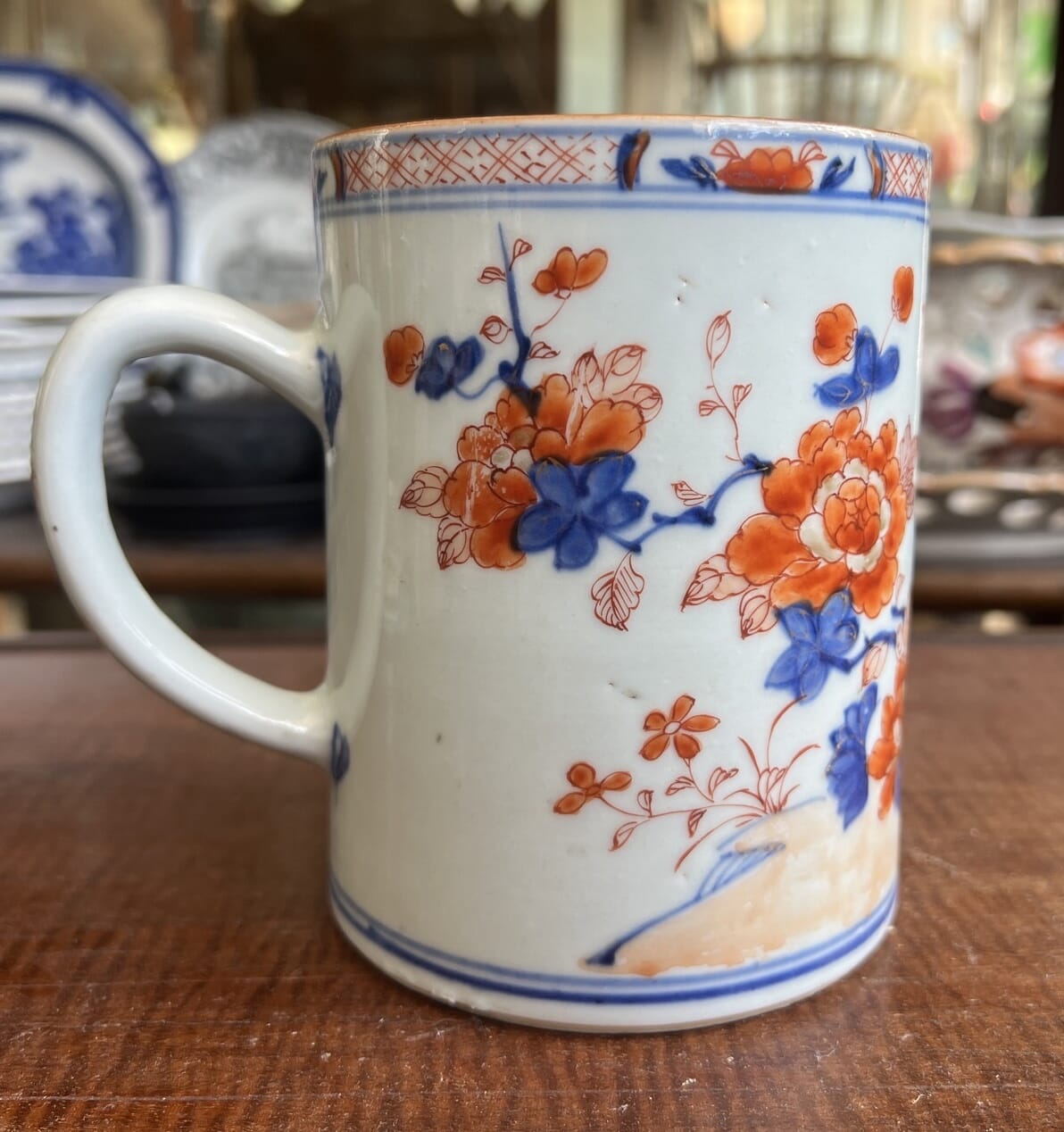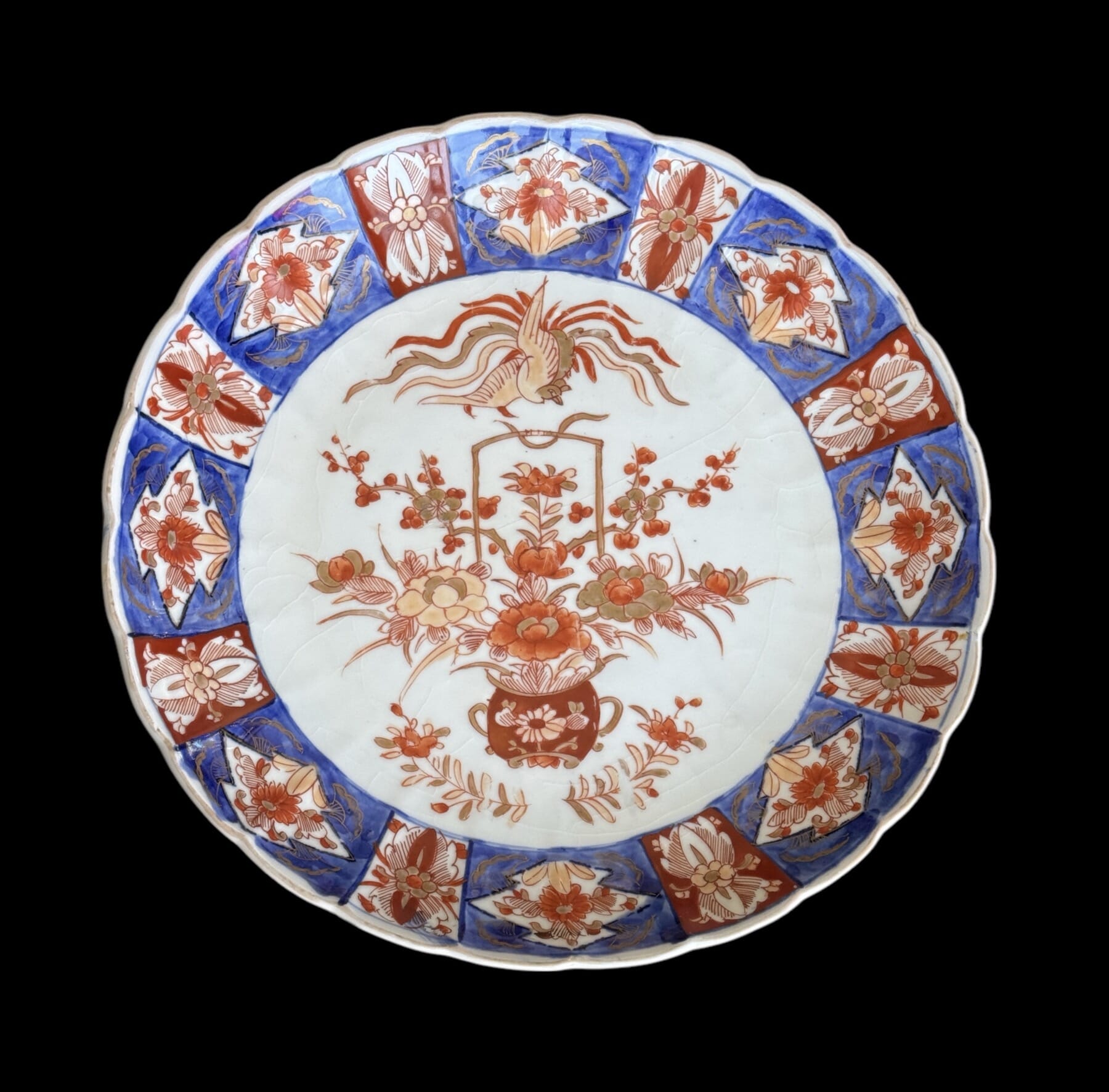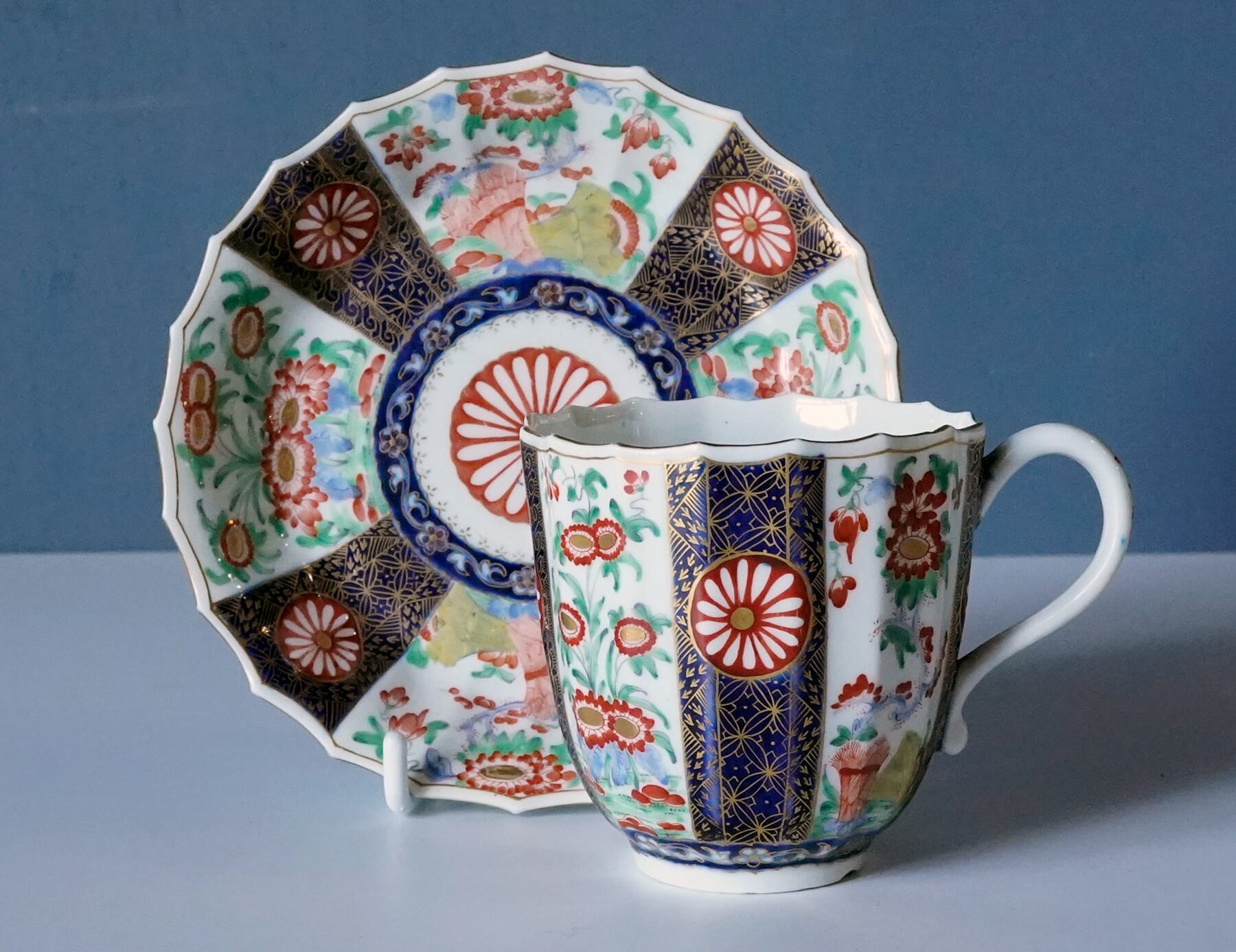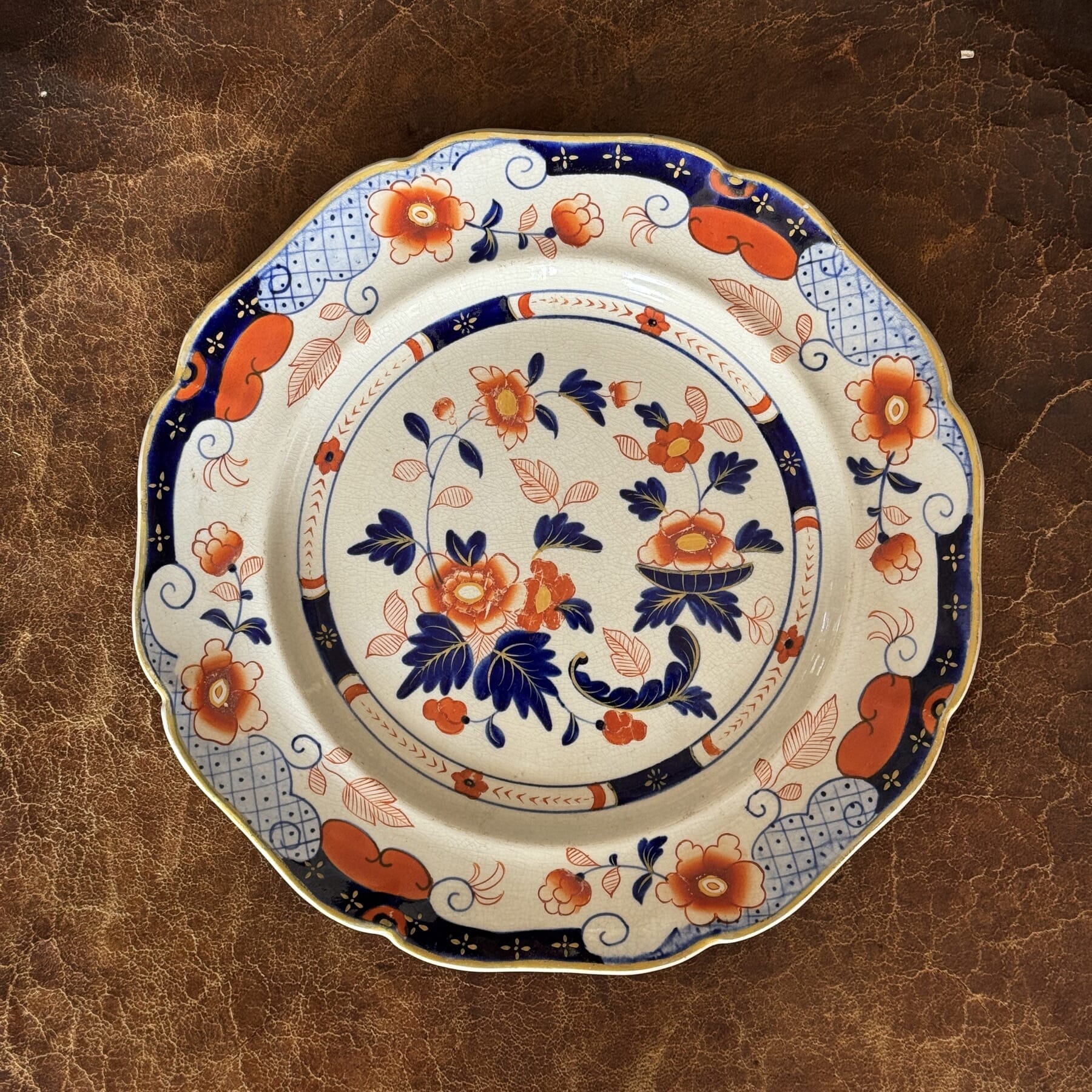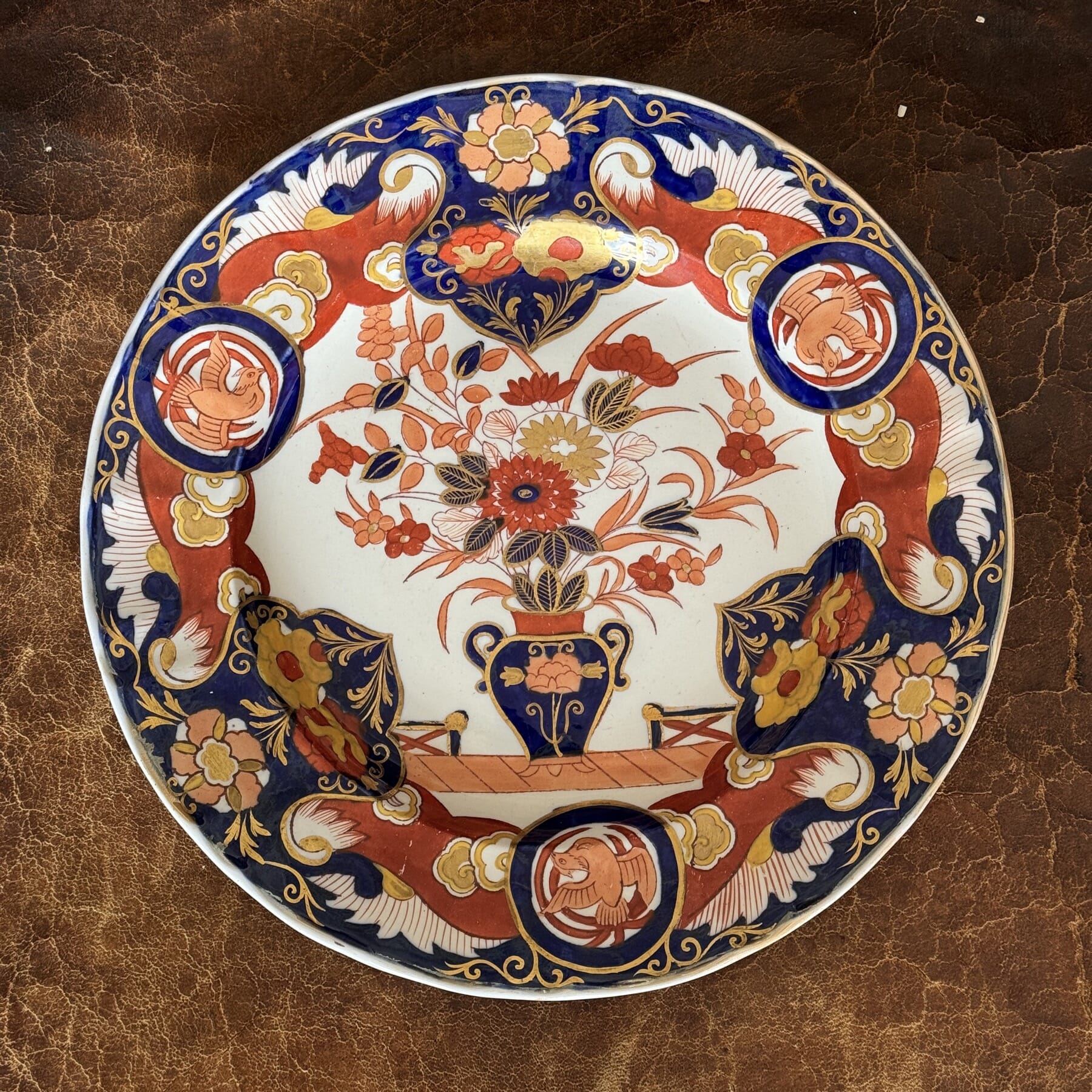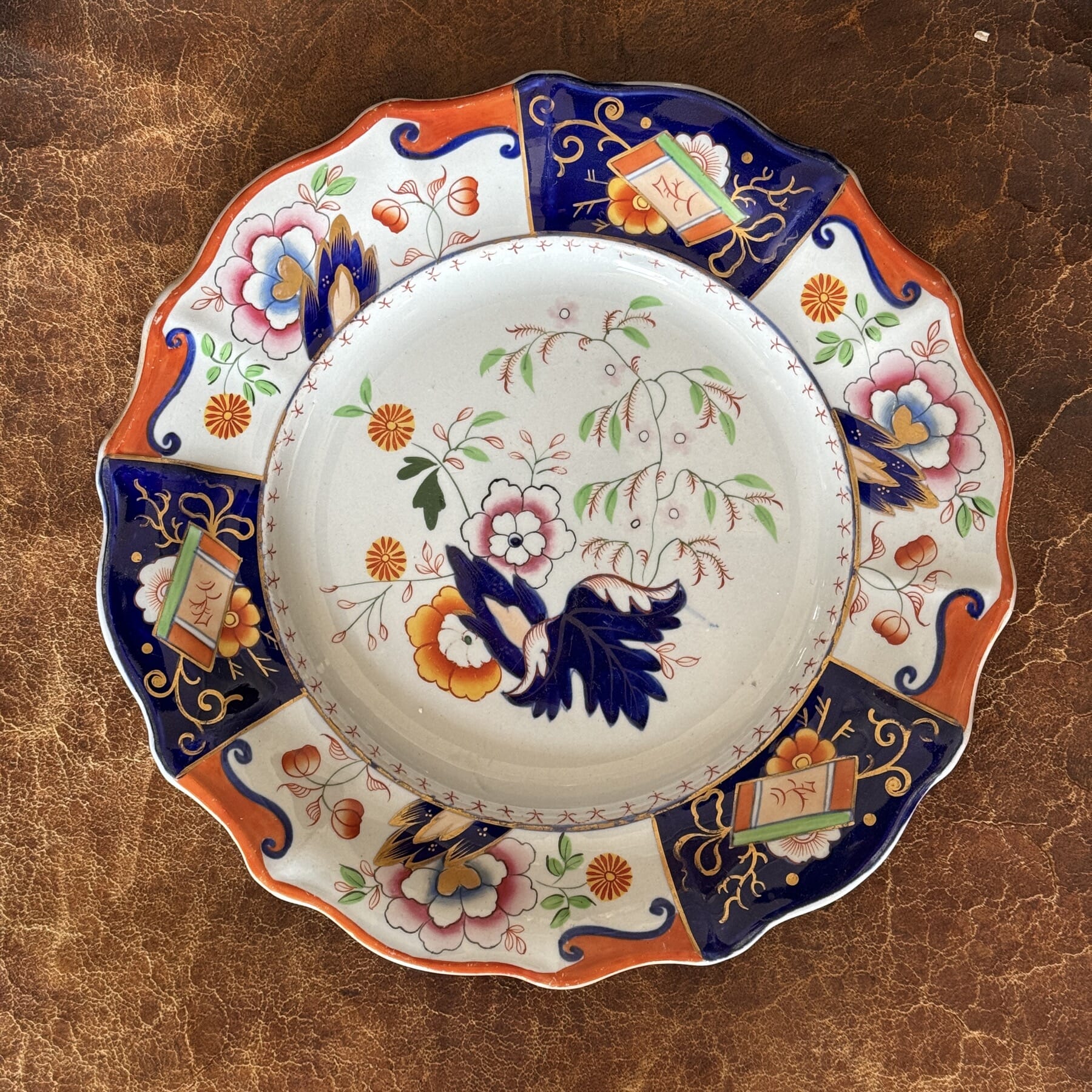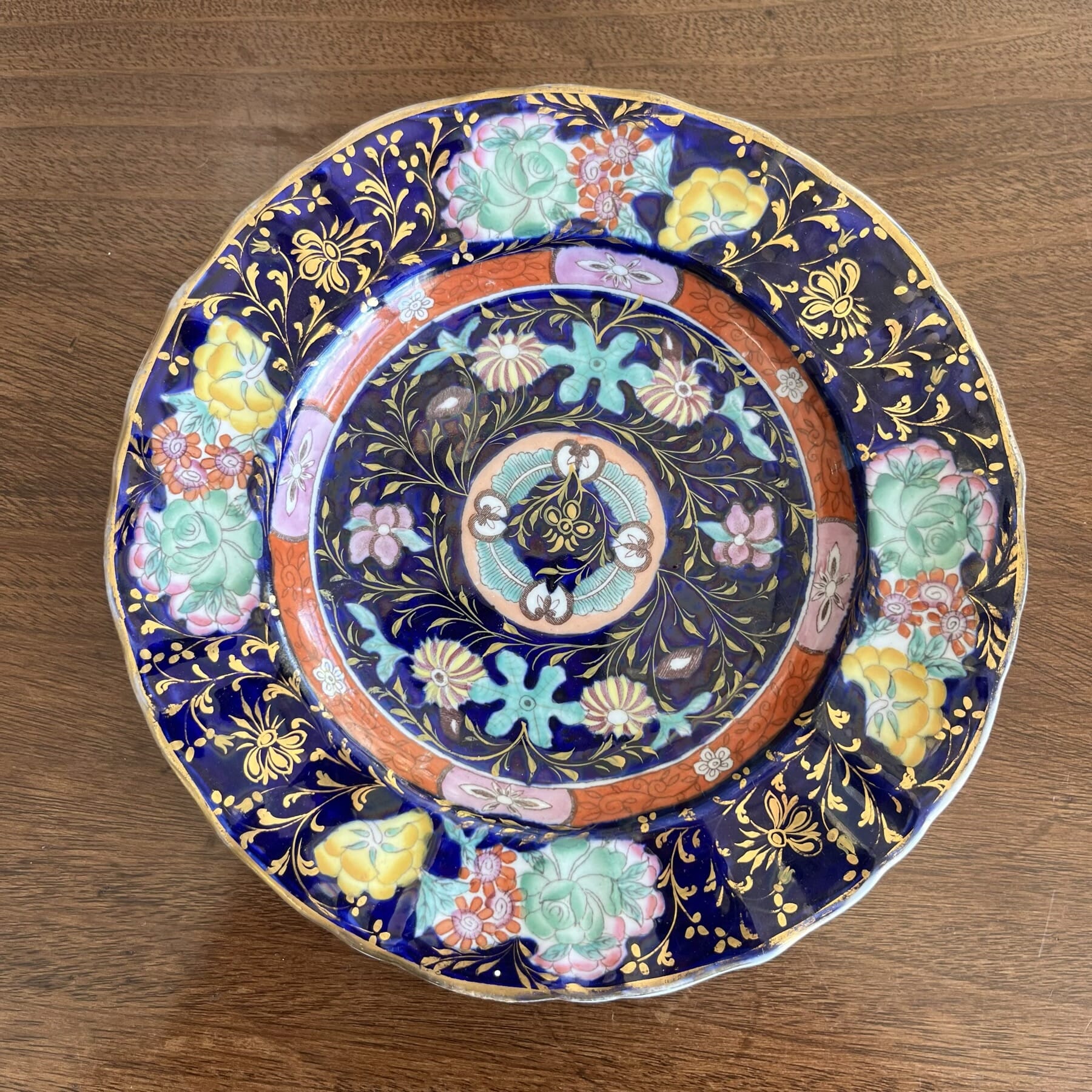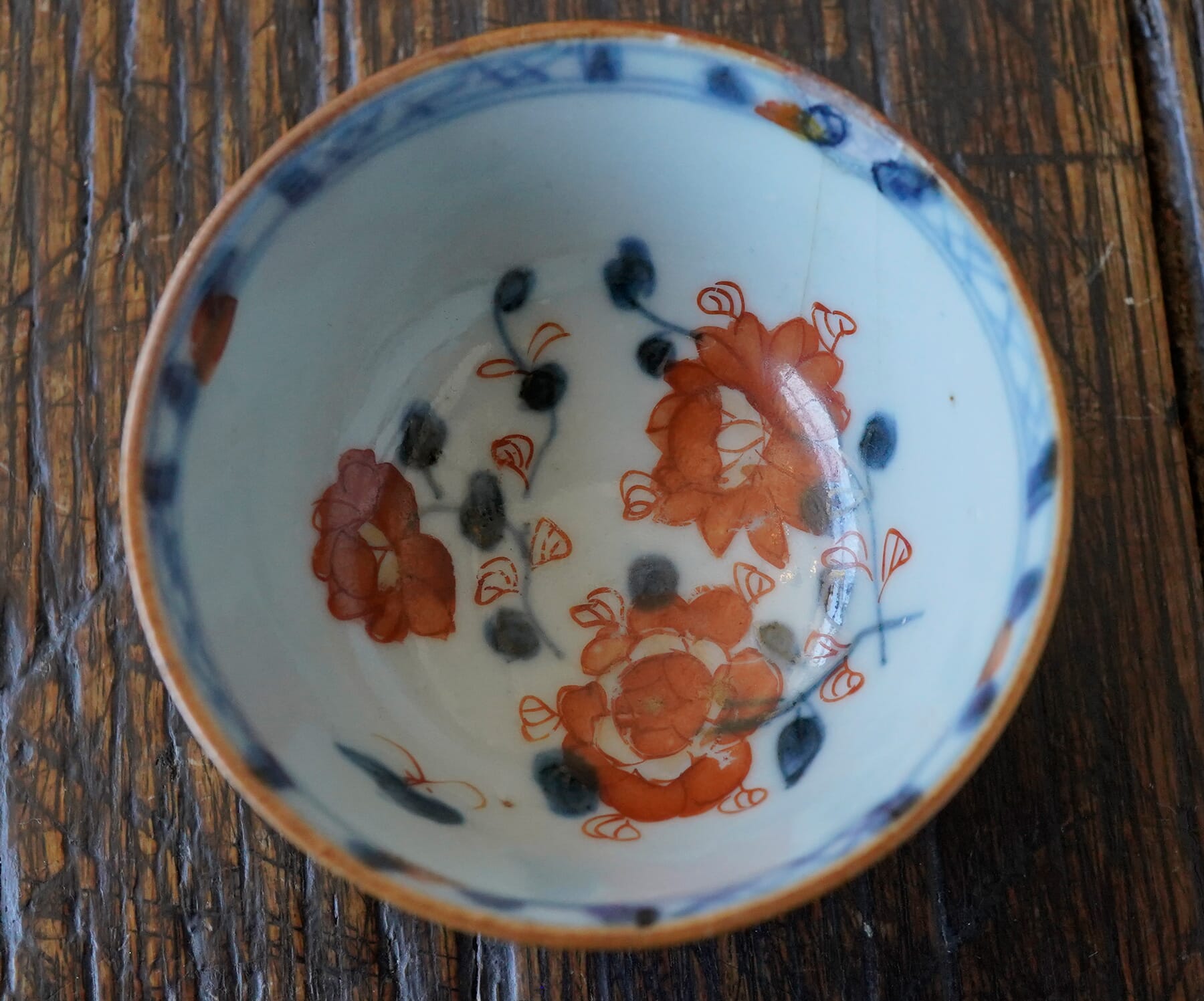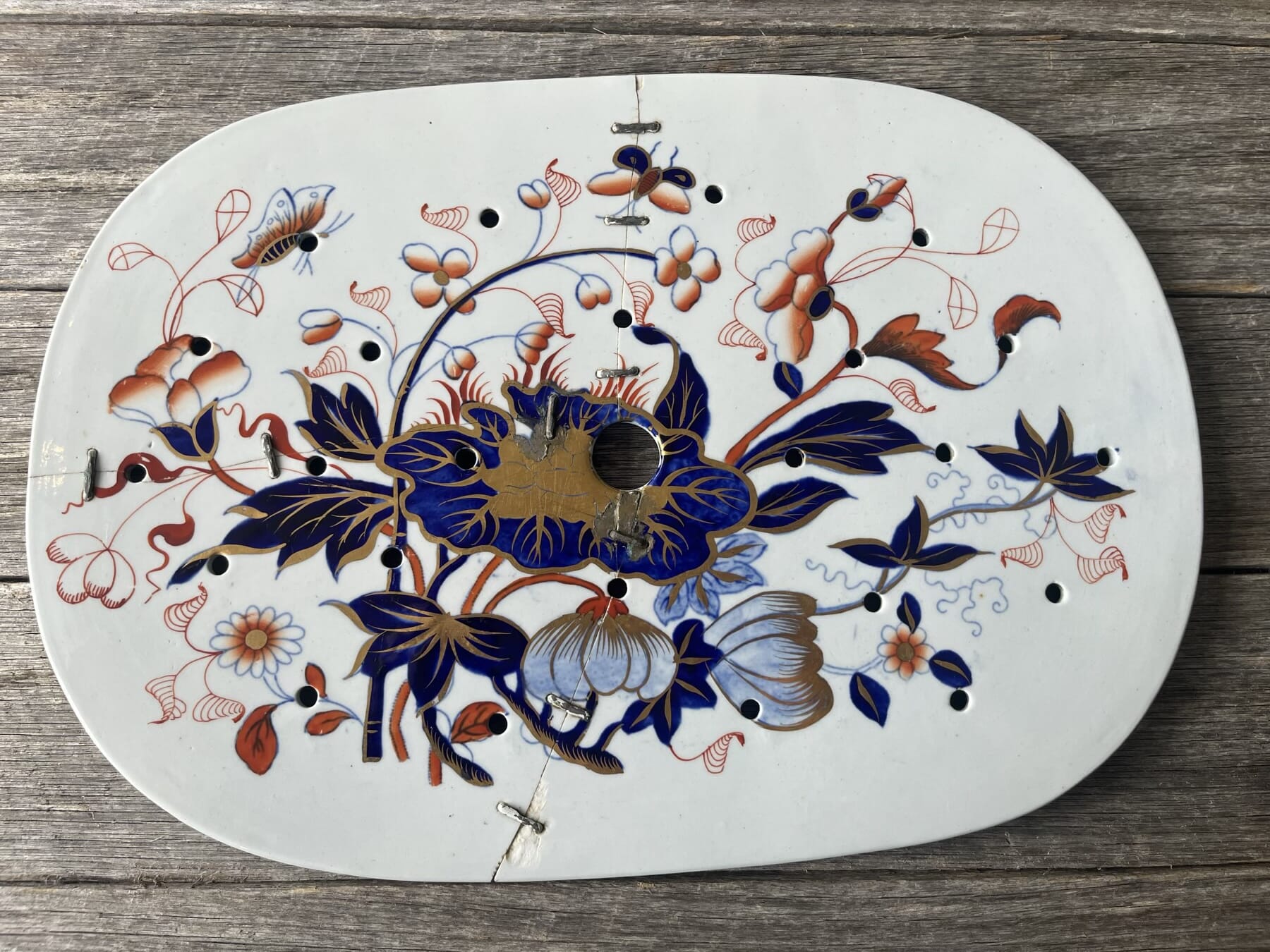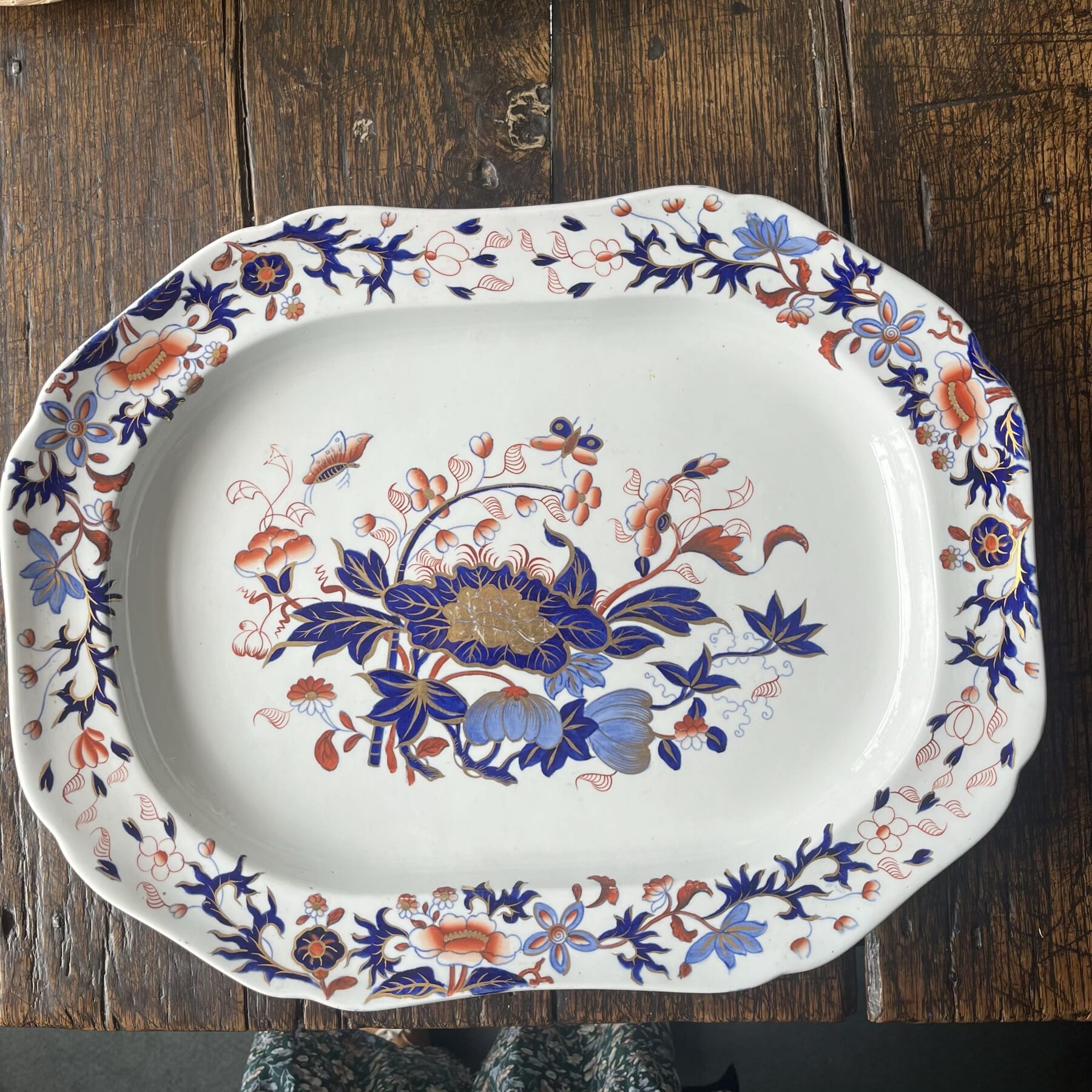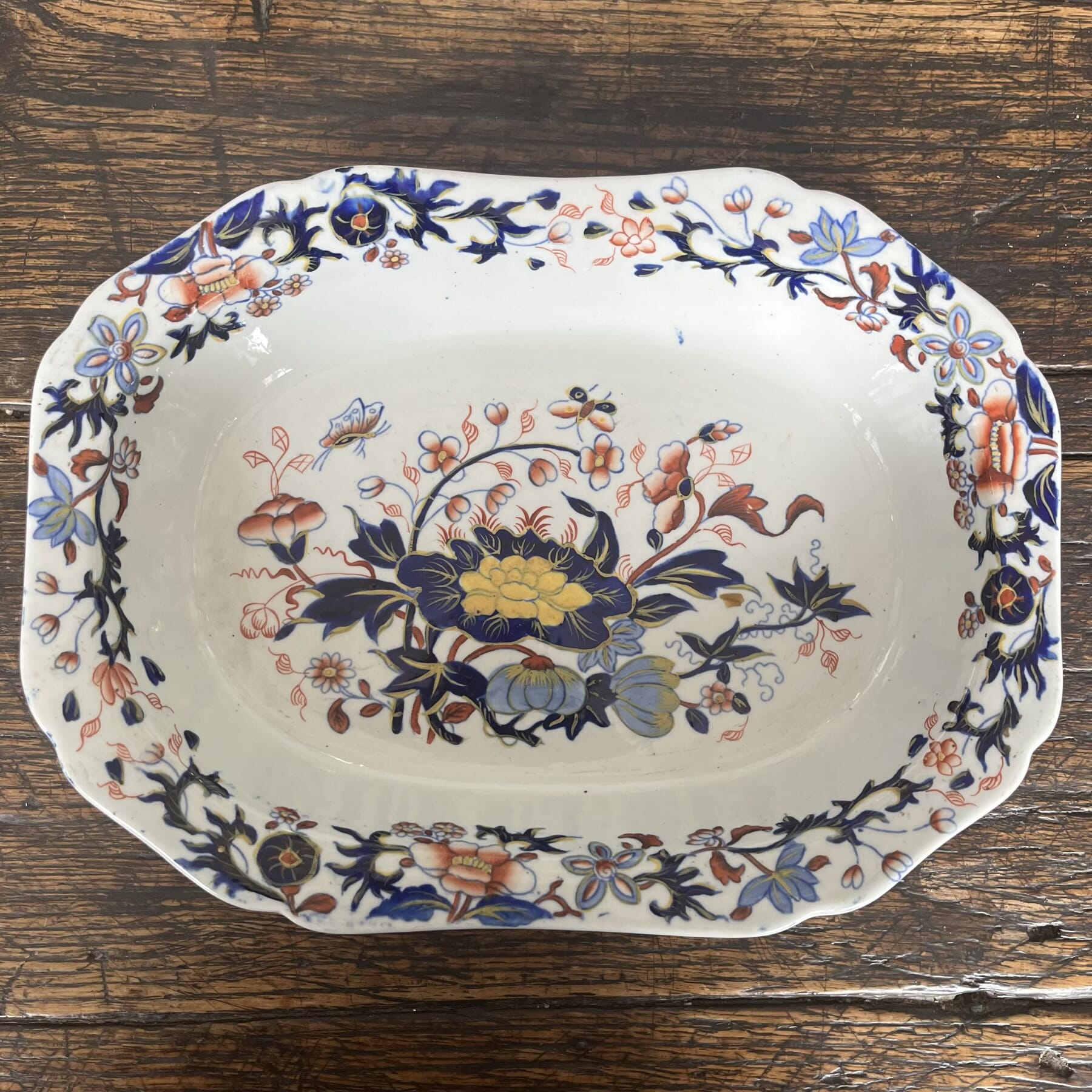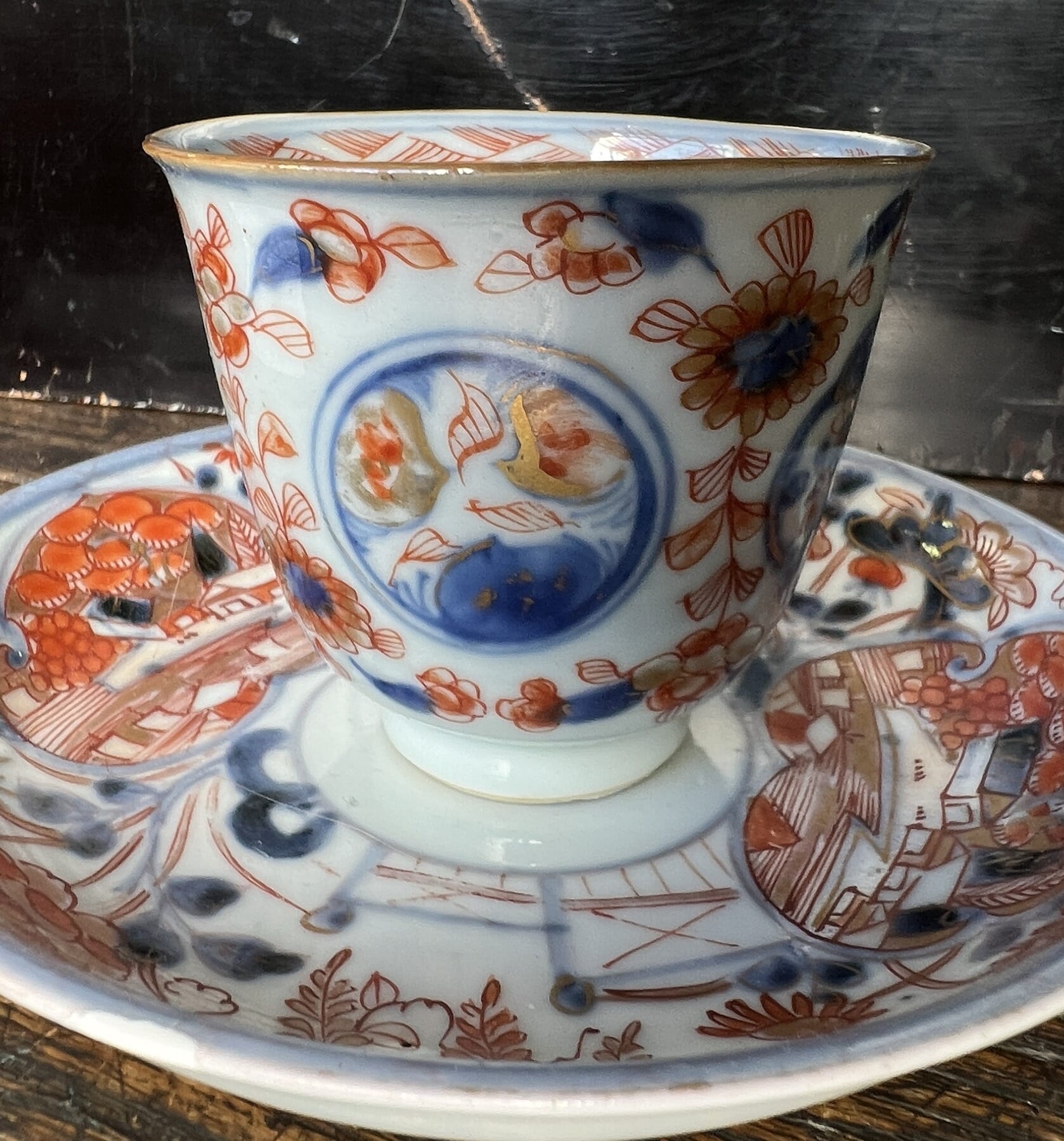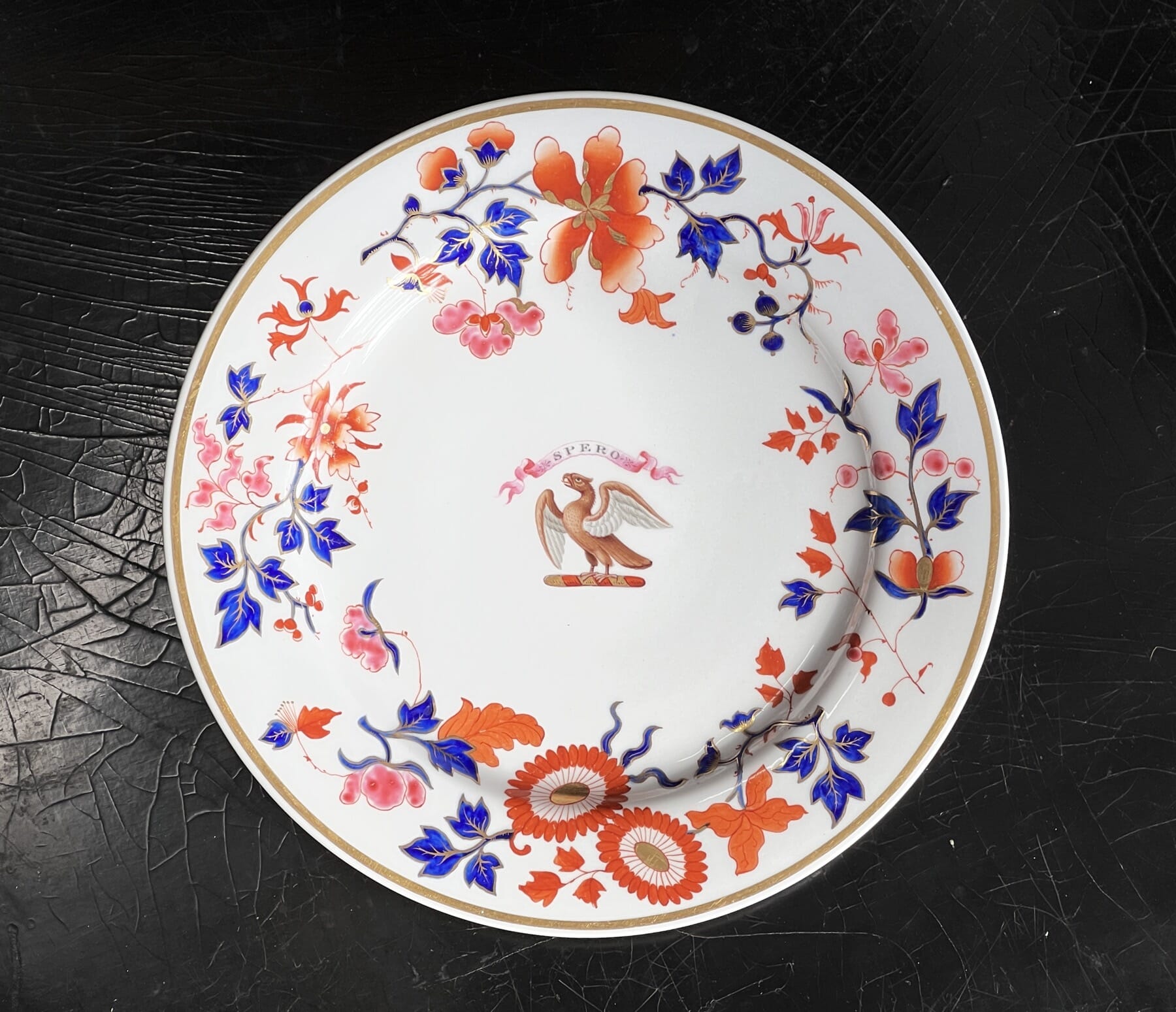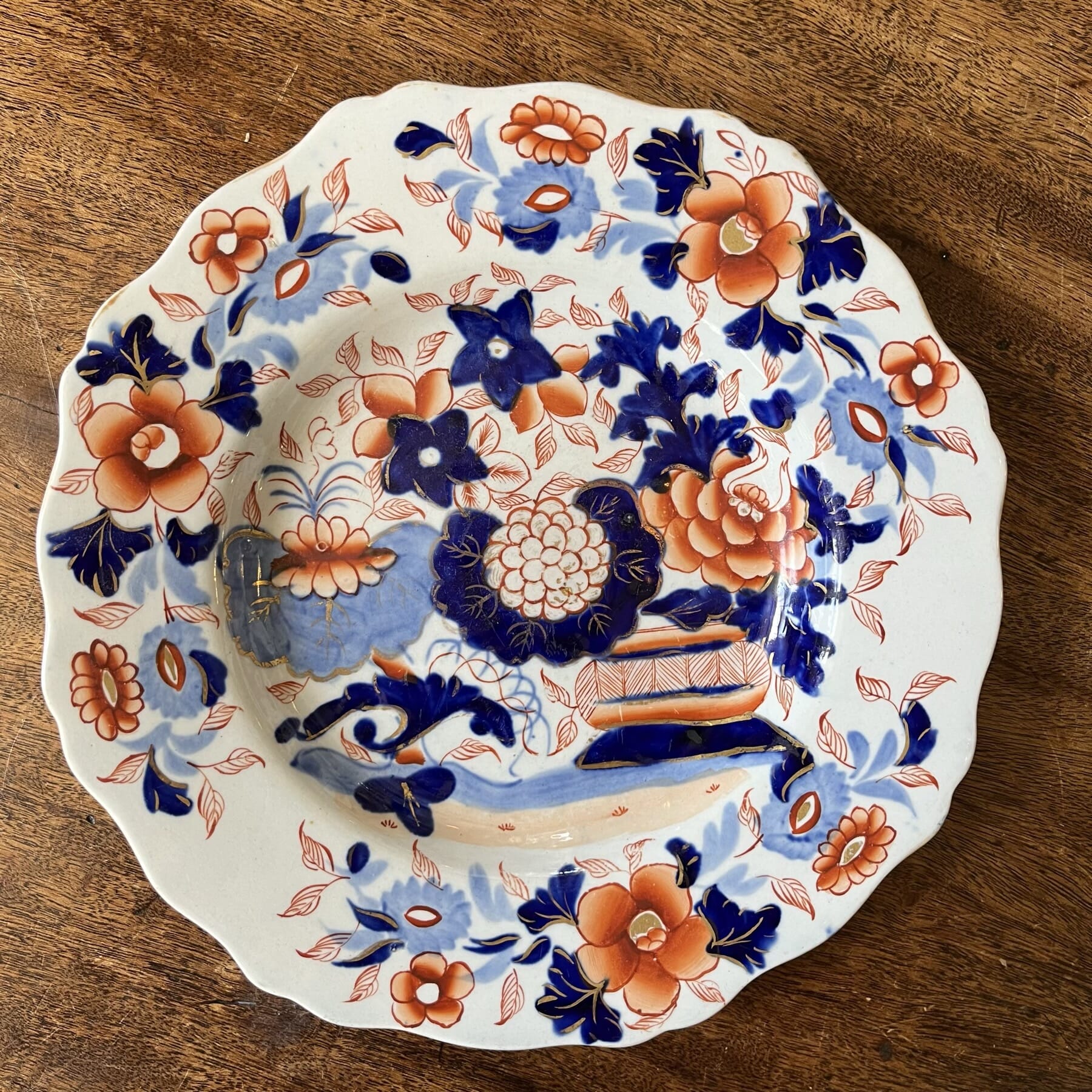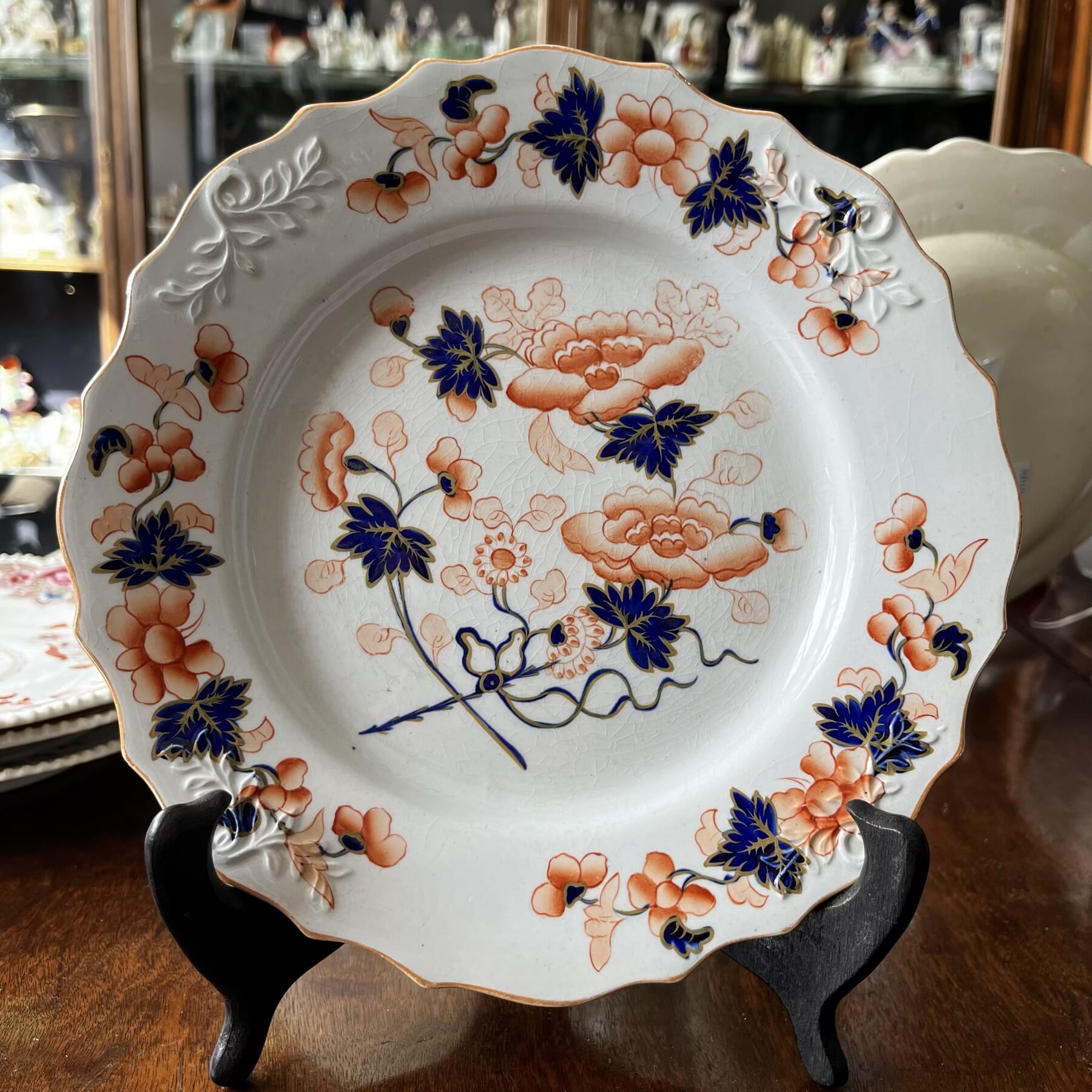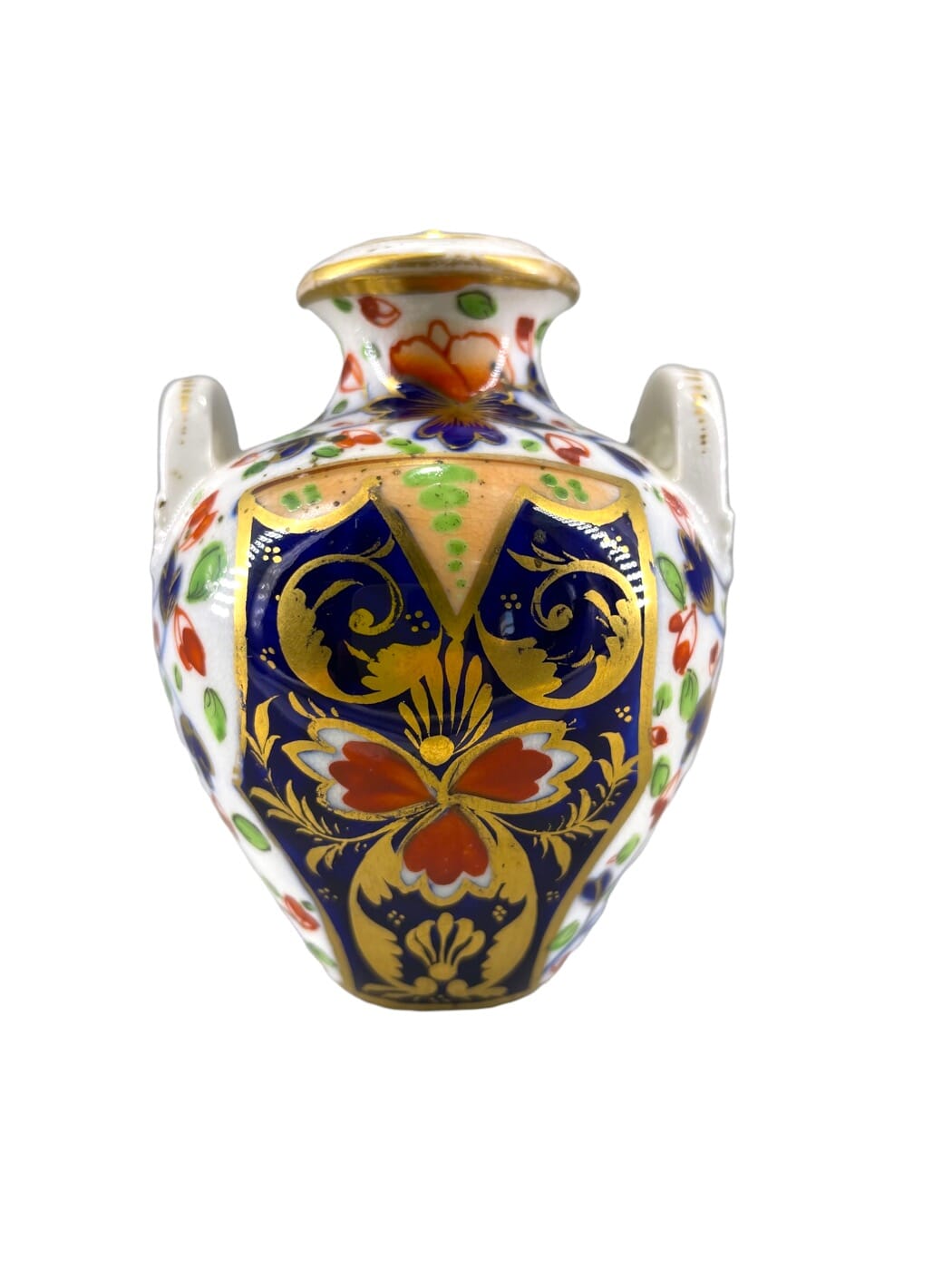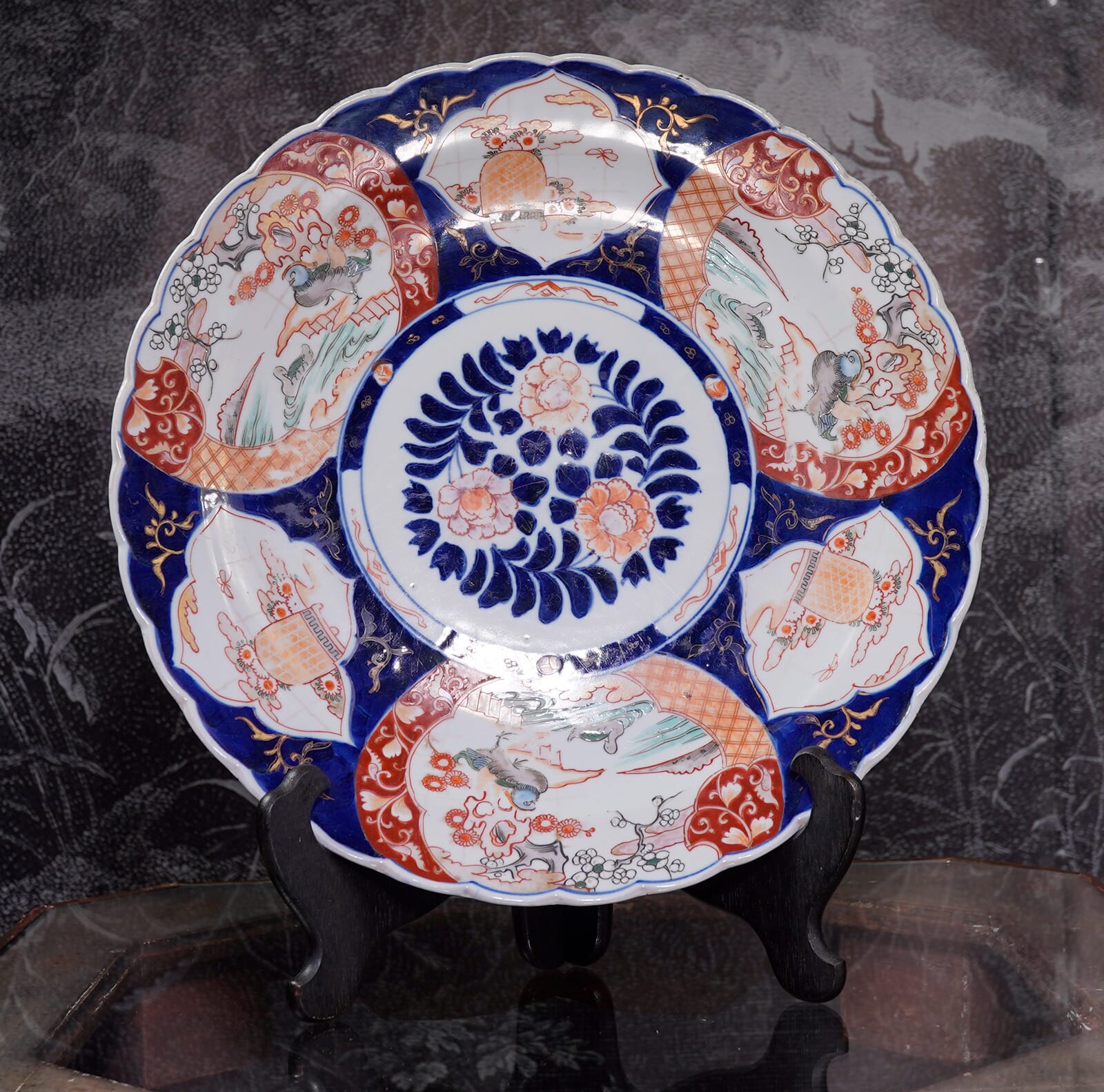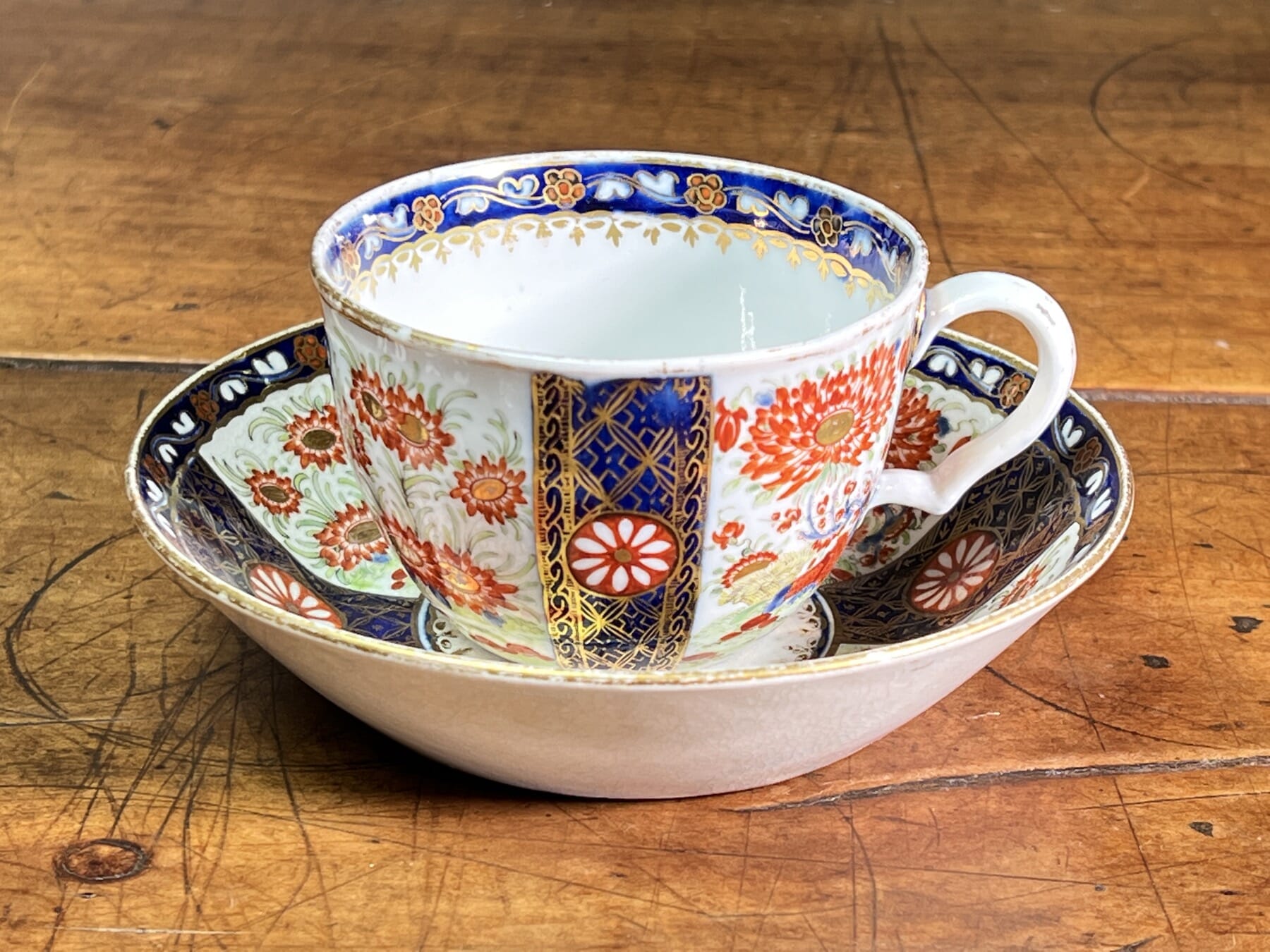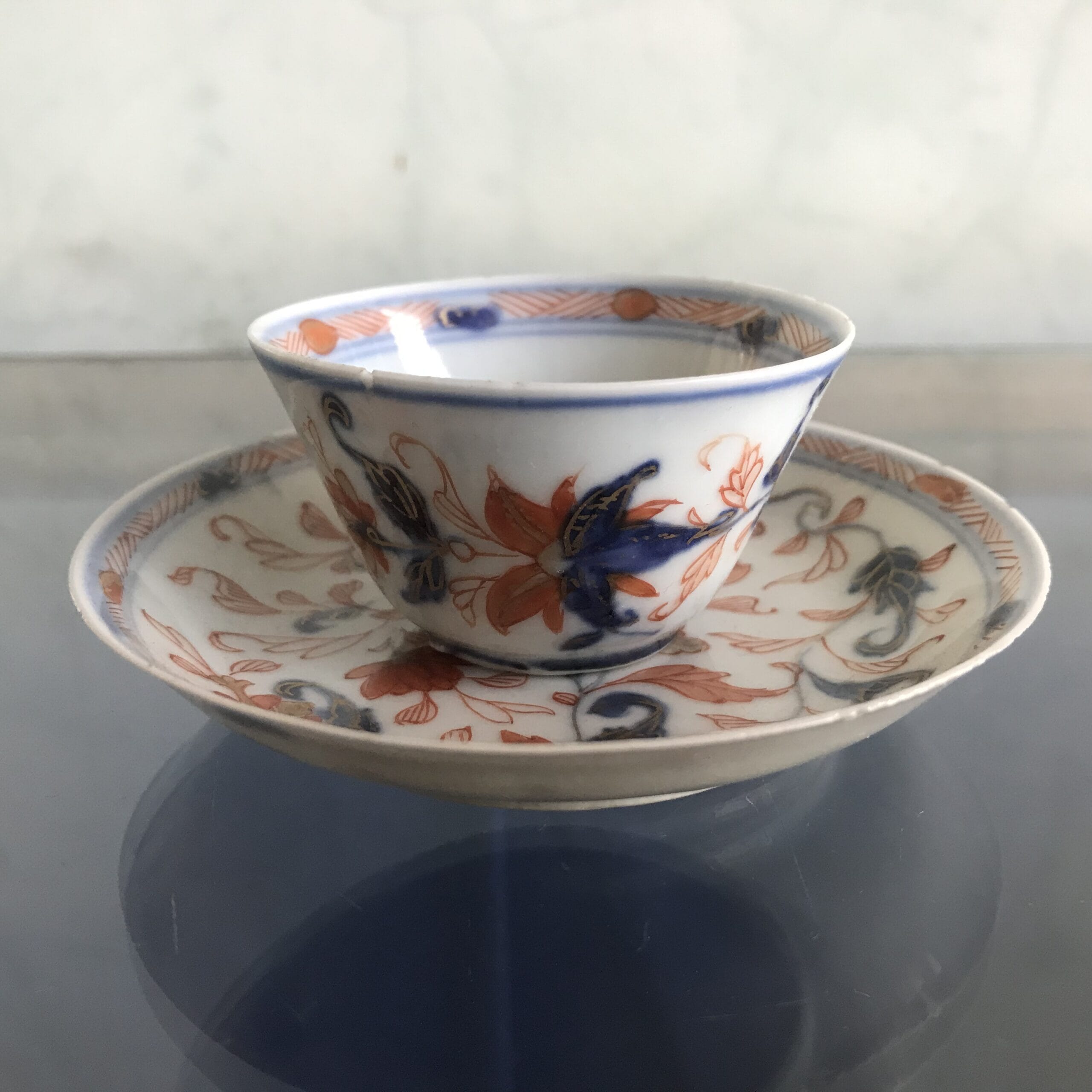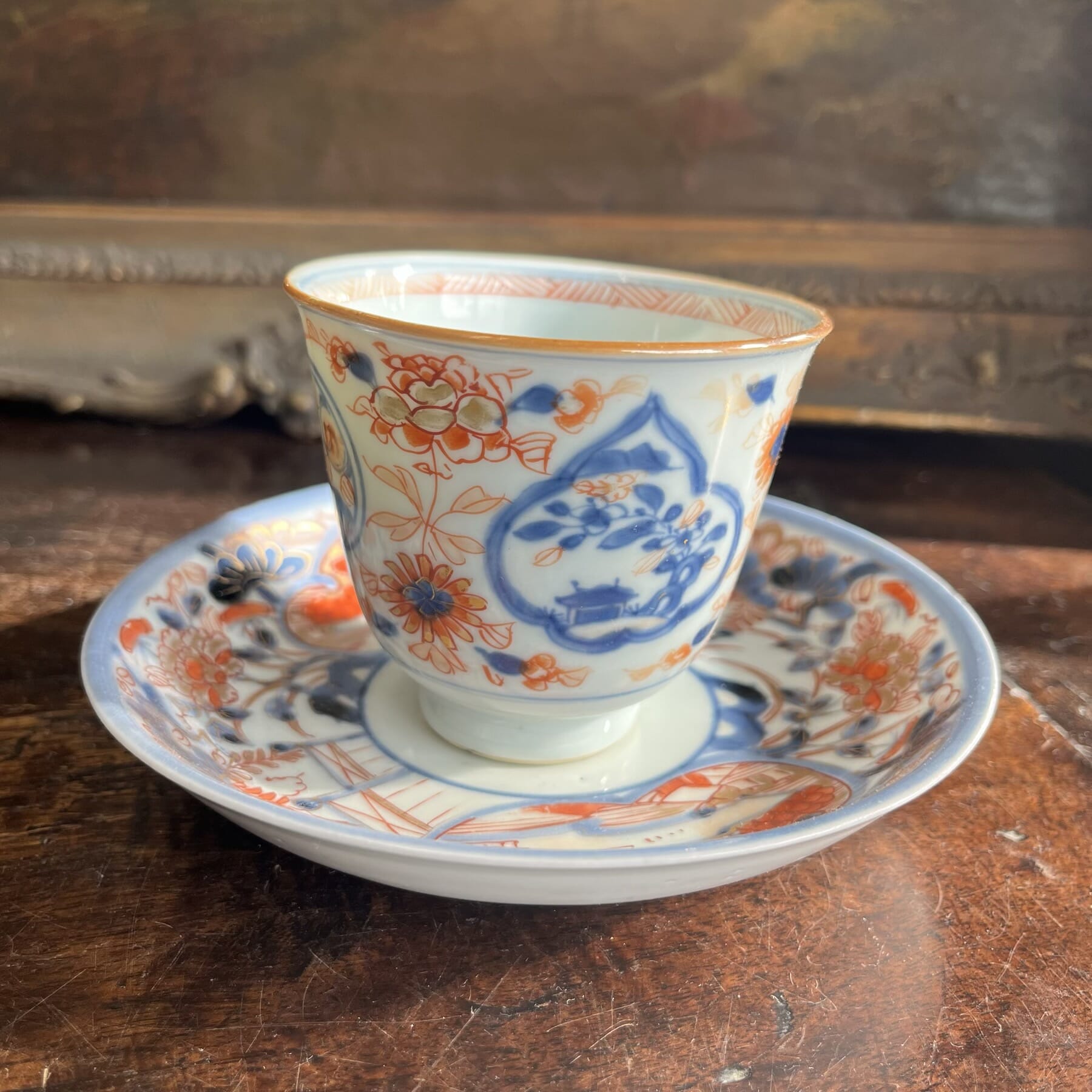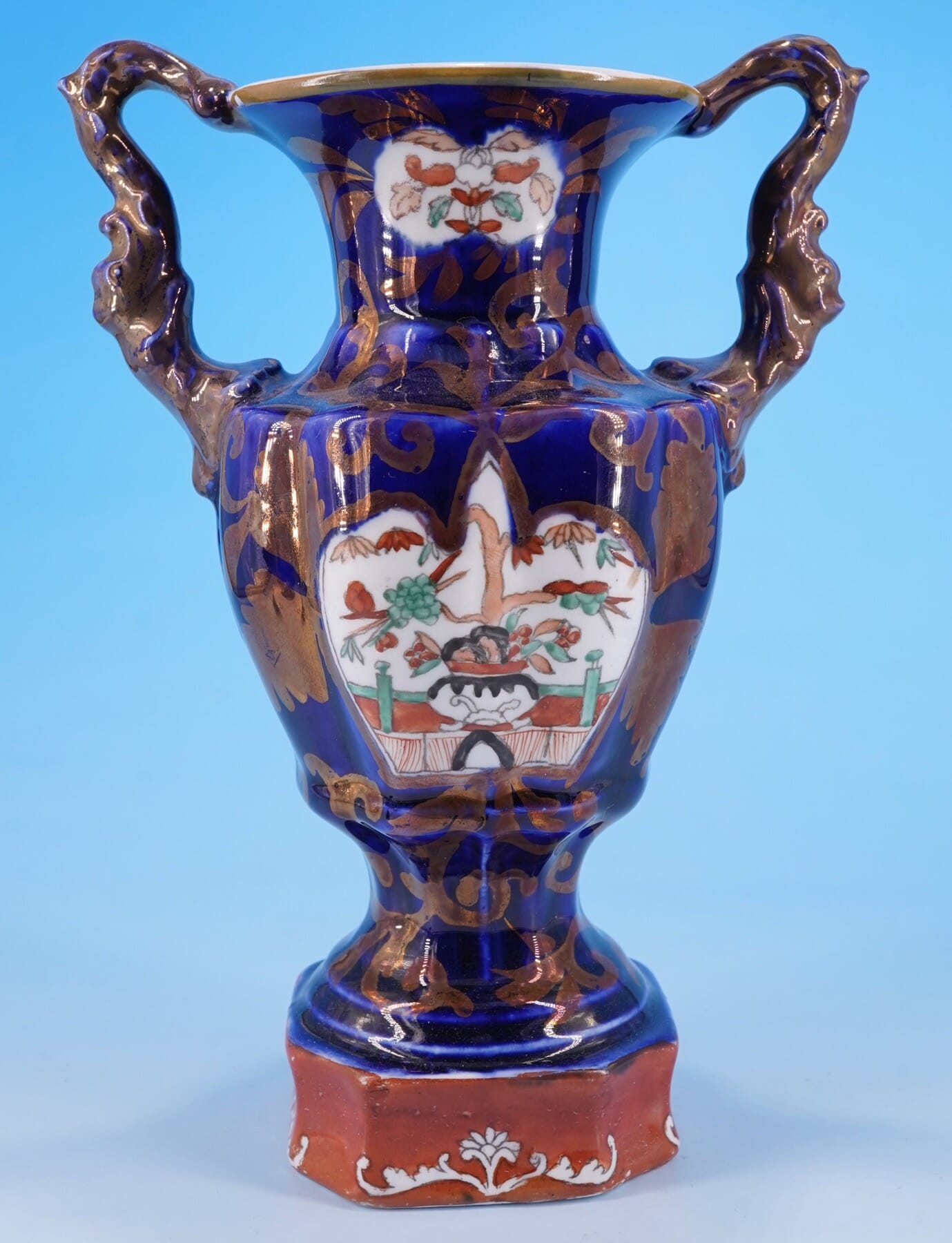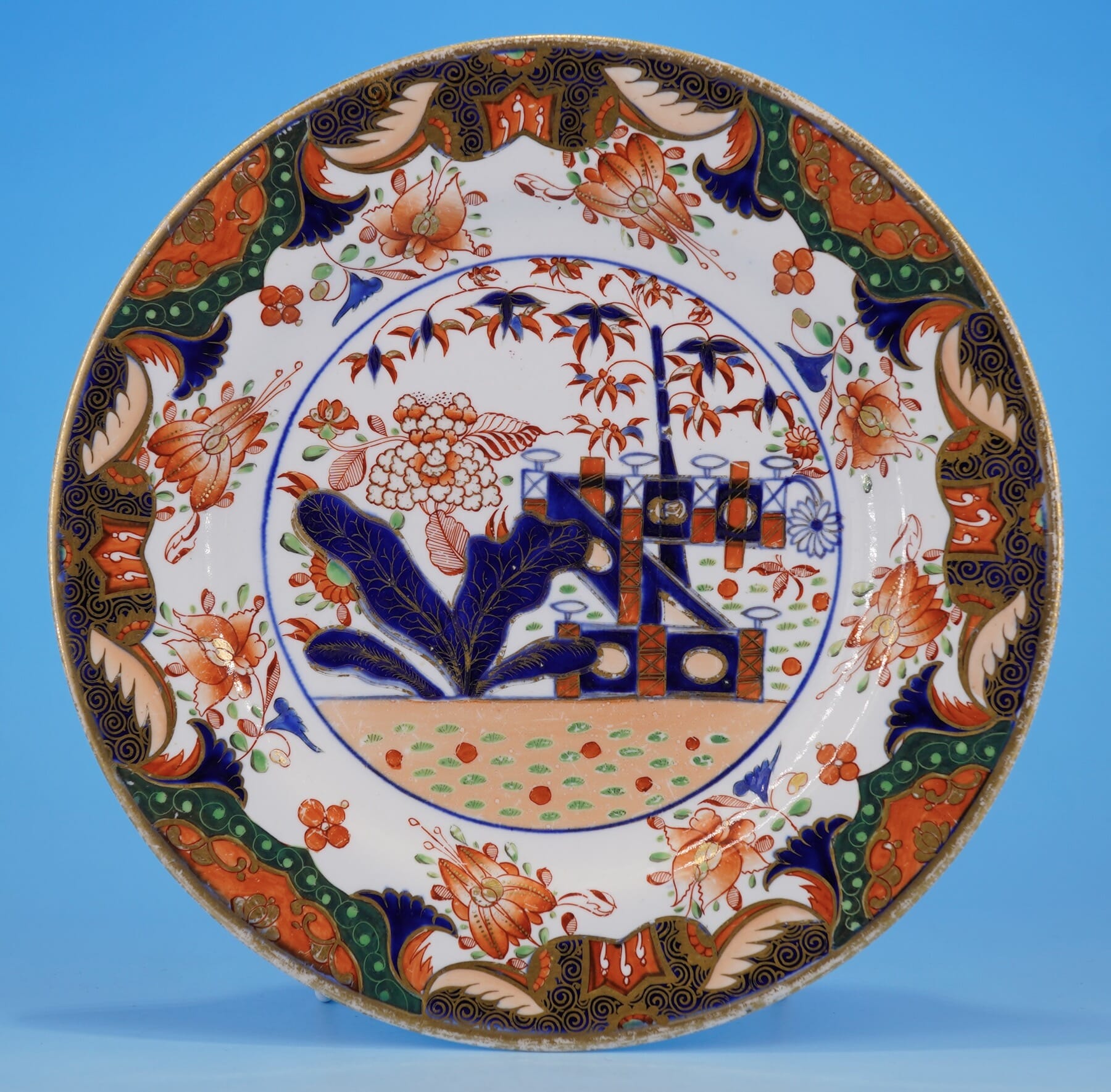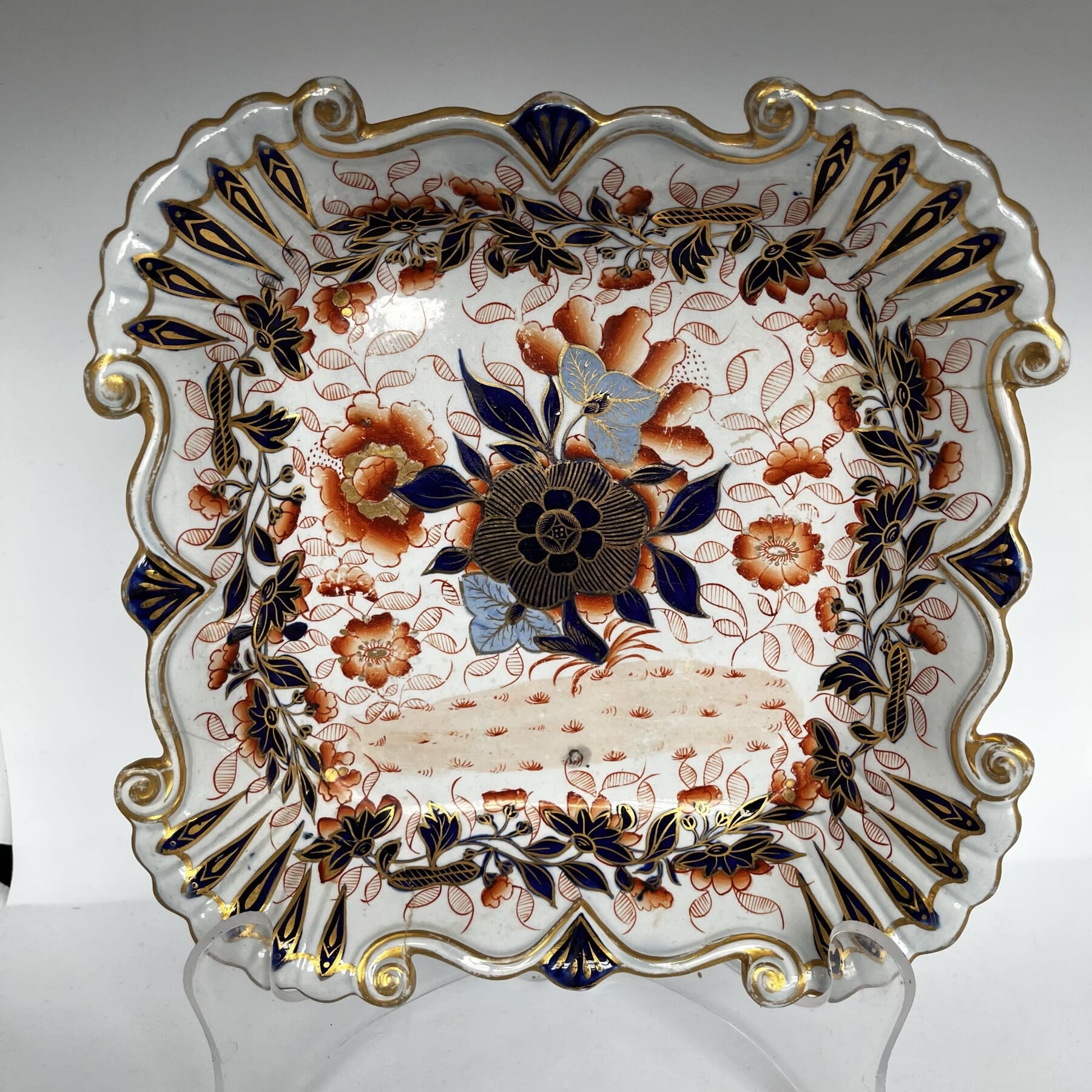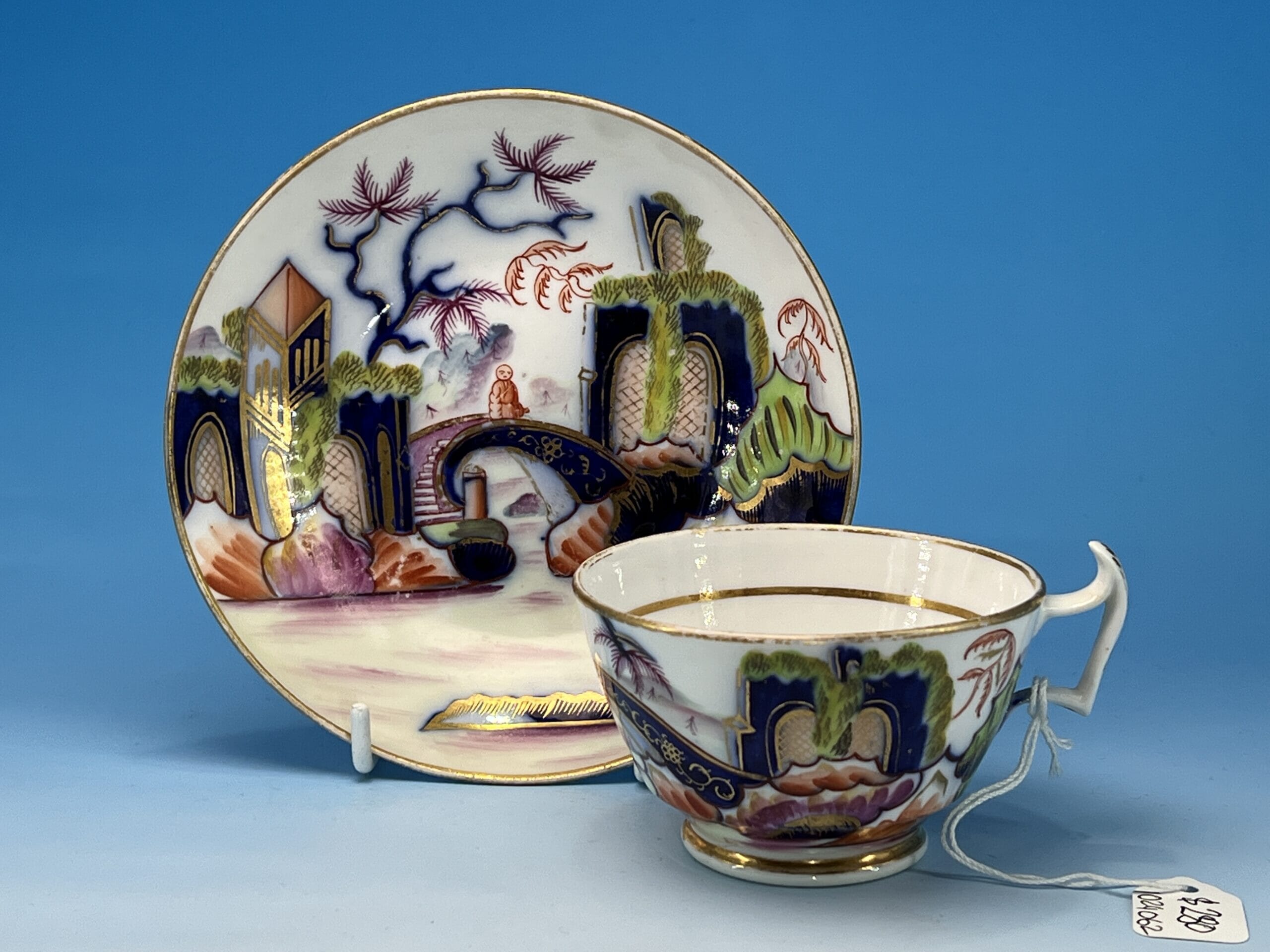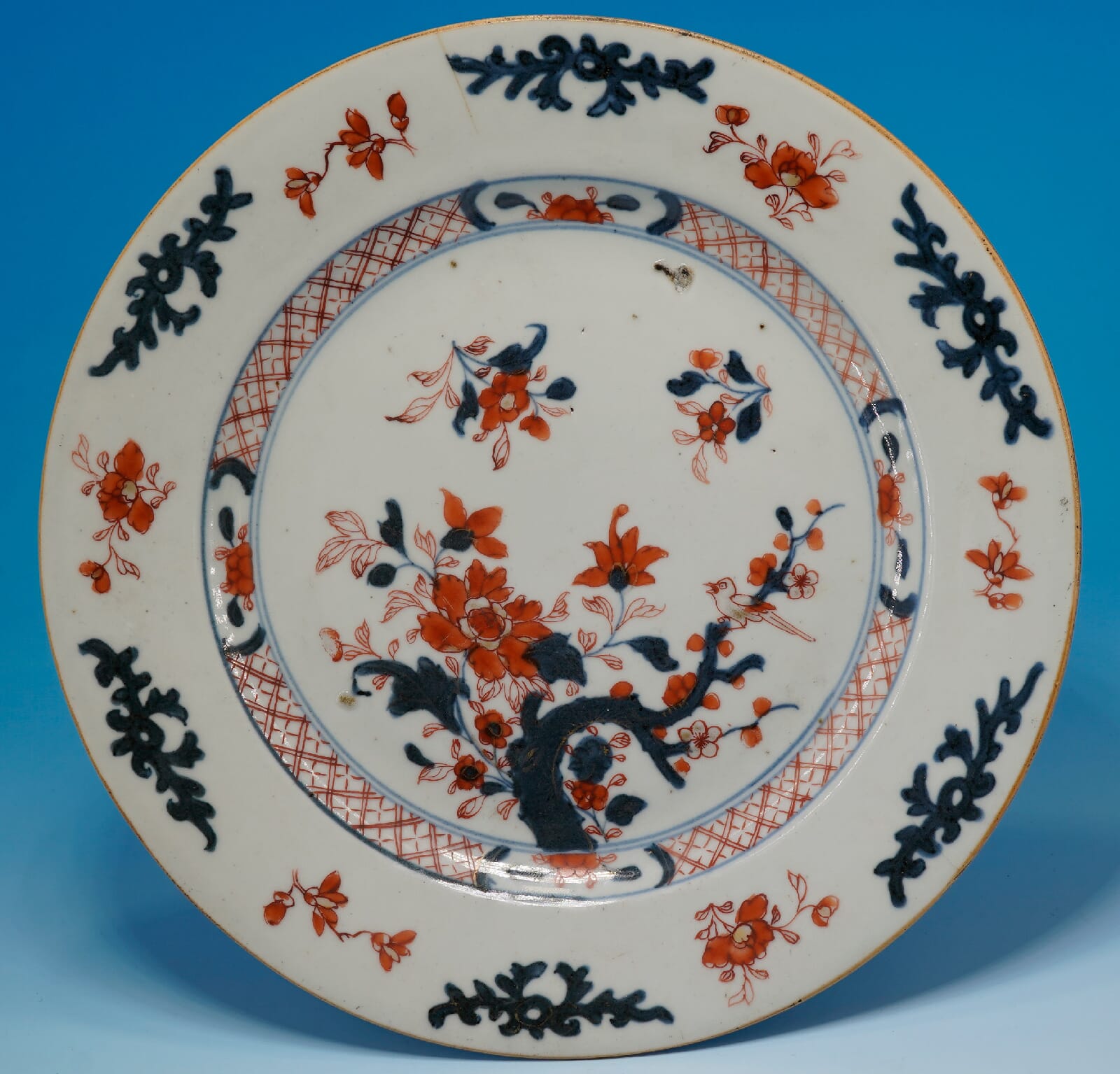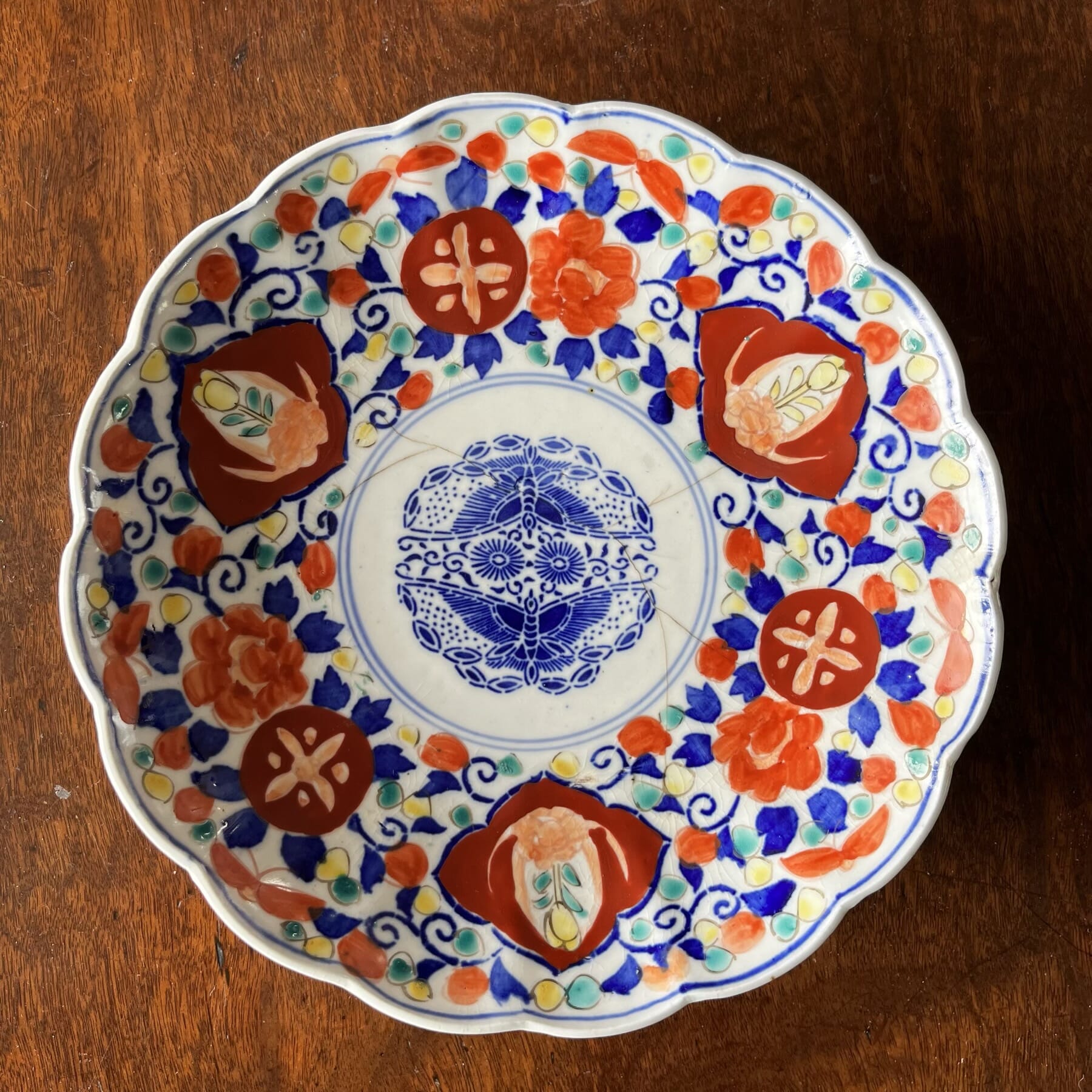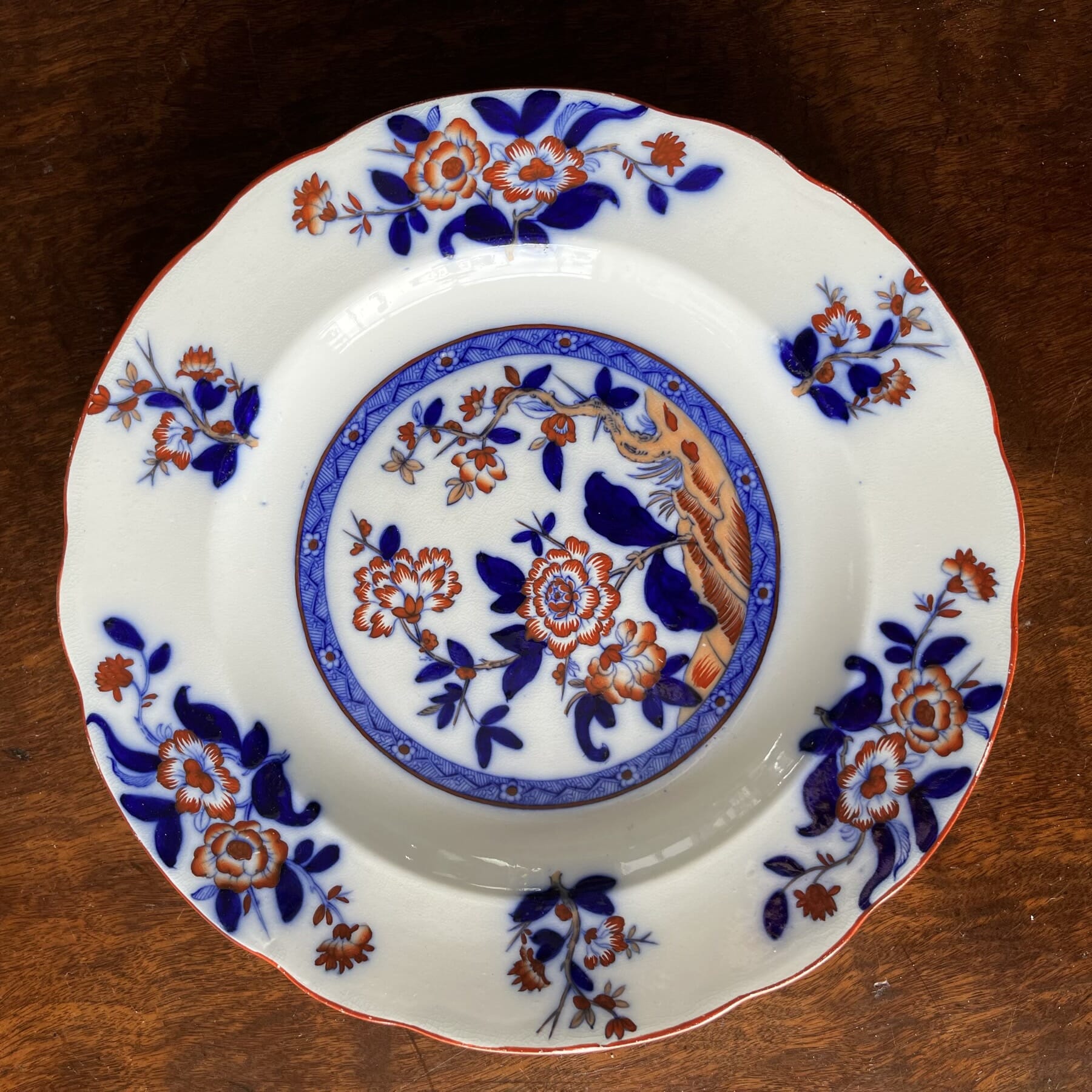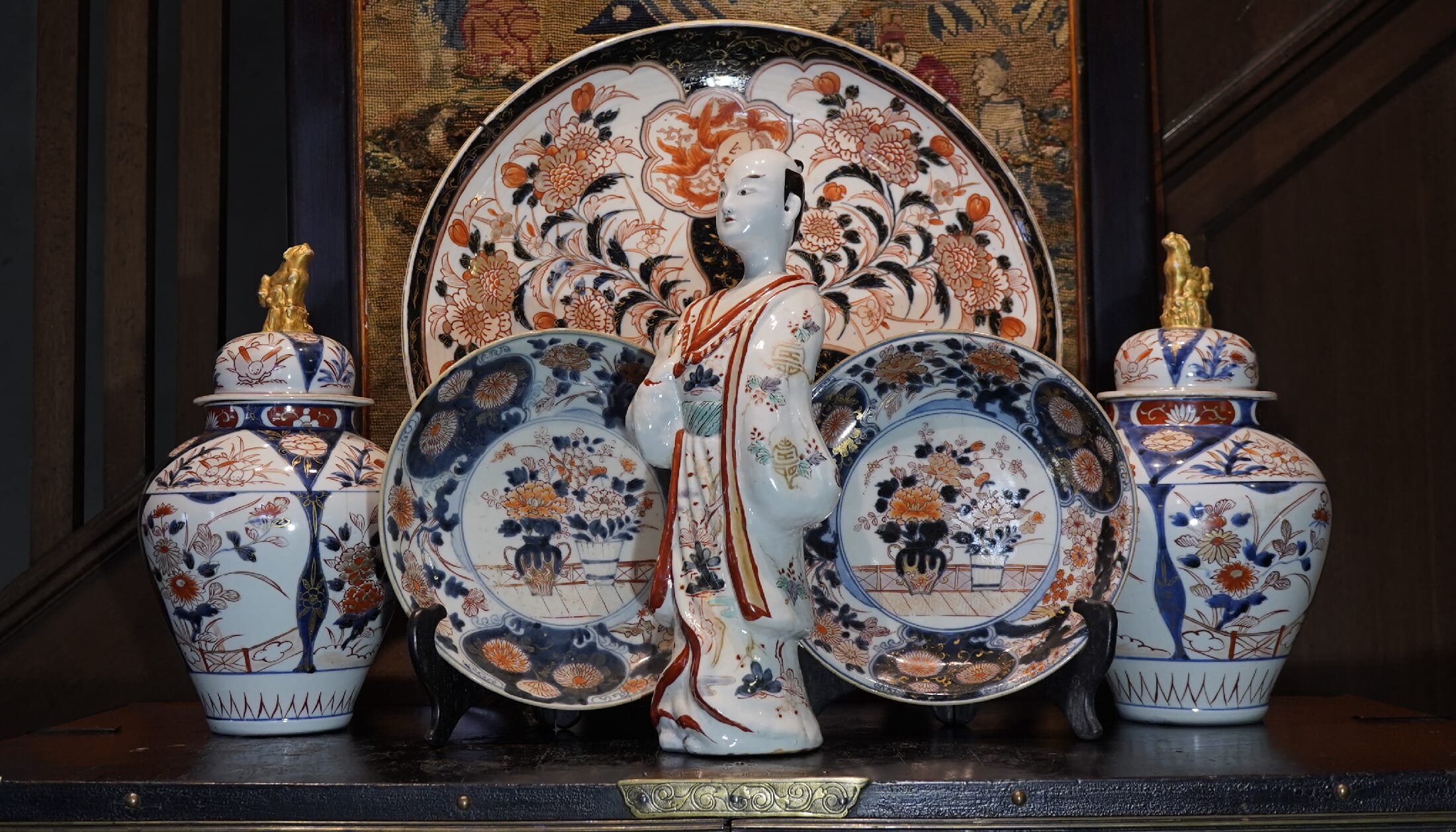
This week we are having a closer look at the highly popular Imari pattern.
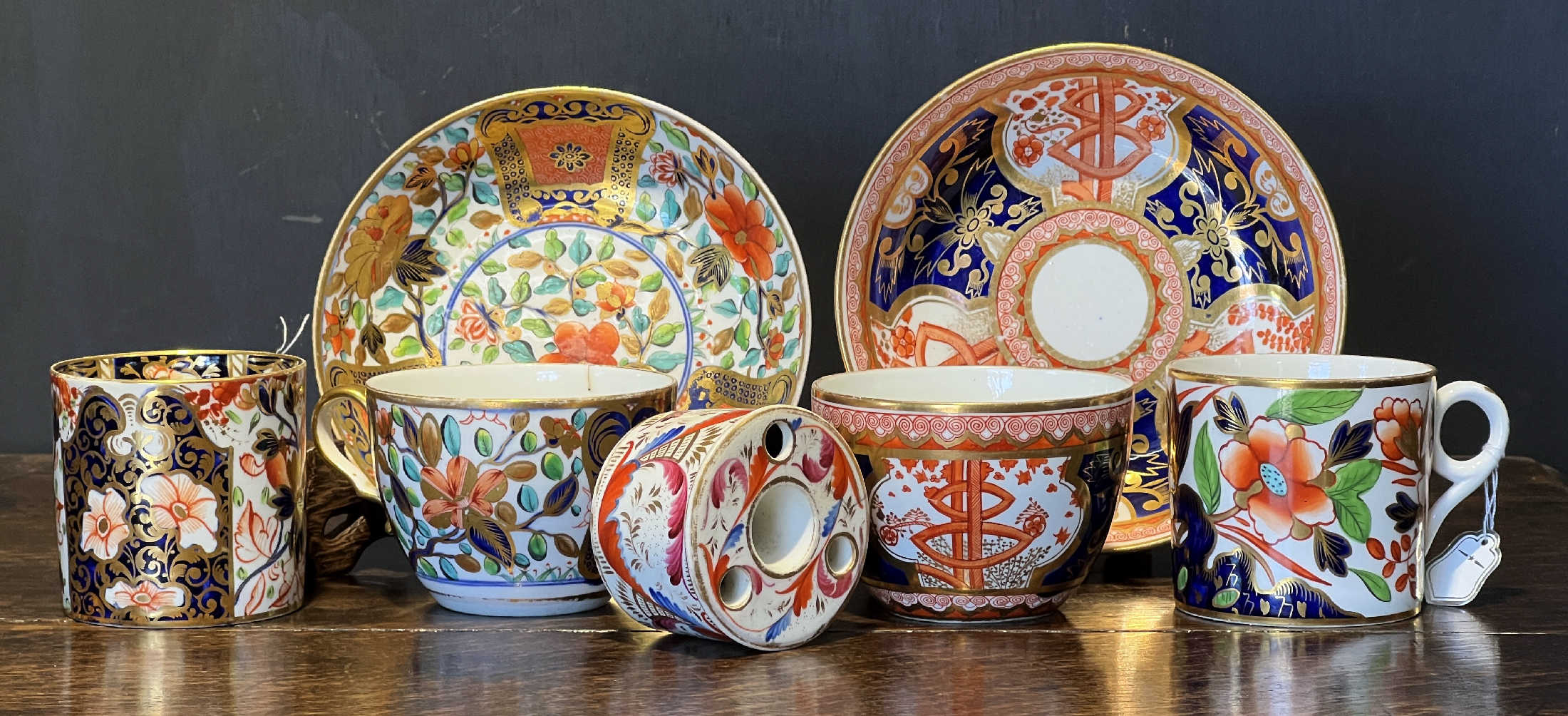
The Imari pattern has a rich history steeped in Japanese culture and global trade.
Originating in the town of Arita on the island of Kyushu in the 17th century, Imari porcelain quickly gained popularity both domestically and internationally. Named after the port city of Imari, from where these exquisite wares were exported, the pattern typically features vibrant colours of underglaze cobalt blue, iron red, green, and gilt accents, often depicting asian motifs such as flower gardens, and landscapes. Initially, Imari porcelain was highly sought after by European aristocracy, sparking a craze known as “Imari-mania” in the West during the 17th and early 18th century. While China was a well-established trade route by this time, Japan was a little harder to access, and less Japanese Imari porcelain made its way to Europe. This scarcity led to it being priced at a premium, more expensive than Chinese equivalents, which were neither the same porcelain nor style.
When Japan closed it’s trading ports down, and almost all trade with foreigners was forbidden by Imperial edict in the early 18th century, the Europeans were devastated: they were Imari Addicts, and their source of Imari was suddenly taken away.
Enter the ever-opportunistic Chinese traders… mainland China quickly became Imari-experts, and mass production of Imai-style porcelain began in the first decades of the 18th century. By the mid-18th century, huge amounts of Imari ware was making its way by ship to England and the Continent. At the same time, the Europeans had also figured out the secret of making porcelain -and naturally, the first thing they replicated were the prestigeous and expensive Imari wares.
Japanese Imari is a beautiful product to collect, and is generally either the very early products, c. 1680-1720, with a large gap when production for export almost ceased, and then the re-opening of Japan in the mid-19th century. This sudden emergence of Japan in International Trade led to vast quantities of Imari porcelain once again finding its way to the West – and as the volume increased into the early 20th century, the price dropped. It’s still the same – early = expensive, later = less expensive.
Chinese products often appeal to a different collector, and are keenly sought after as well.
-
 Meissen Imari plate, stunning gilding, Kretschmar mark c. 1740$4,800.00 AUD
Meissen Imari plate, stunning gilding, Kretschmar mark c. 1740$4,800.00 AUD -
 Pair of Japanese Imari plates, flower vases, Circa 1700$1,850.00 AUD
Pair of Japanese Imari plates, flower vases, Circa 1700$1,850.00 AUD -
 Japanese kinran-de Imari plate, circa 1720$420.00 AUD
Japanese kinran-de Imari plate, circa 1720$420.00 AUD -
 Chinese Export Imari tea canister, tapered corners, c. 1740$395.00 AUD
Chinese Export Imari tea canister, tapered corners, c. 1740$395.00 AUD -
 Japanese Imari hexagonal vase, Arita kilns, Edo period, late 17th – early 18th century$540.00 AUD
Japanese Imari hexagonal vase, Arita kilns, Edo period, late 17th – early 18th century$540.00 AUD -
 Chinese export plate, Imari flowers & bird, c. 1740$460.00 AUD
Chinese export plate, Imari flowers & bird, c. 1740$460.00 AUD -
 Large Japanese Imari charger, 17th century$4,500.00 AUD
Large Japanese Imari charger, 17th century$4,500.00 AUD -
 Japanese Arita porcelain figure of a man, circa 1700Sold
Japanese Arita porcelain figure of a man, circa 1700Sold -
 Chinese export chocolate pot & cover, Imari colours, c. 1740$580.00 AUD
Chinese export chocolate pot & cover, Imari colours, c. 1740$580.00 AUD -
 Japanese Imari pair of baluster vases with foo dog finials, Imari rabbit pattern, c.1700$3,950.00 AUD
Japanese Imari pair of baluster vases with foo dog finials, Imari rabbit pattern, c.1700$3,950.00 AUD -
 Chinese Imari teapot, C. 1730$980.00 AUD
Chinese Imari teapot, C. 1730$980.00 AUD -
 Bow teabowl with Imari pattern, ’30’ mark, c. 1760$560.00 AUD
Bow teabowl with Imari pattern, ’30’ mark, c. 1760$560.00 AUD
England rapidly became the largest producer of Imari wares in the early 19th century, where the richness of the tea wares perfectly matched the elegance of the Regency interiors. The Derby factory found a great demand for their particular take in Imari, for some reason later known as ‘witches pattern’. This classic English Imari continued to be made right through the 20th century, one of the true survivors in ceramic design.
Despite fluctuations in demand over the centuries, the allure of Imari porcelain endures, representing not only the exotic origin in Japanese ceramic artistry but also a testament to the enduring legacy of cross-cultural exchange and trade.
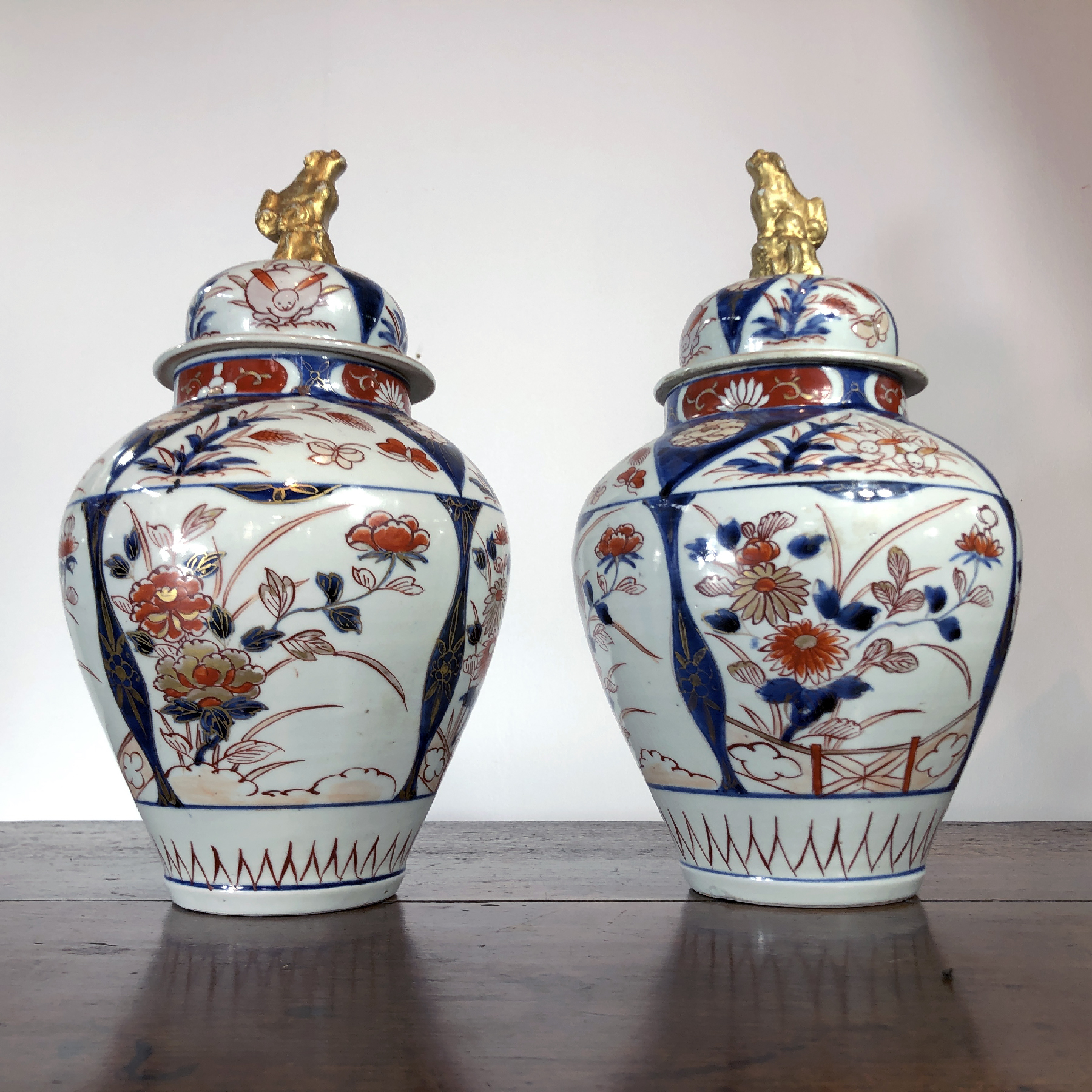
-
 Japanese Imari lidded bowl, paper cranes & flowers, c.1880$290.00 AUD
Japanese Imari lidded bowl, paper cranes & flowers, c.1880$290.00 AUD -
 Large Chinese Export ‘Imari’ tankard, Bird, Peony & Rock, c. 1755$1,450.00 AUD
Large Chinese Export ‘Imari’ tankard, Bird, Peony & Rock, c. 1755$1,450.00 AUD -
 Japanese Imari charger, vase of flowers & pheonix, 19th century$295.00 AUD
Japanese Imari charger, vase of flowers & pheonix, 19th century$295.00 AUD -
 Worcester ‘Queen’s’ pattern coffee & saucer, Red Crescent mark, c. 1770$1,250.00 AUD
Worcester ‘Queen’s’ pattern coffee & saucer, Red Crescent mark, c. 1770$1,250.00 AUD -
 Ridgway pottery plate with Imari pattern 4263, c.1825$160.00 AUD
Ridgway pottery plate with Imari pattern 4263, c.1825$160.00 AUD -
 Ashworth Ironstone plate with Imari pattern, c. 1870$180.00 AUD
Ashworth Ironstone plate with Imari pattern, c. 1870$180.00 AUD -
 Ironstone Imari China plate, Circa 1830.$140.00 AUD
Ironstone Imari China plate, Circa 1830.$140.00 AUD -
 Small Mason’s Ironstone plate, richImari pattern, c. 1850$165.00 AUD
Small Mason’s Ironstone plate, richImari pattern, c. 1850$165.00 AUD -
 Chinese ‘Batavian’ tea bowl, brown glaze with flowers inside, c.1750$195.00 AUD
Chinese ‘Batavian’ tea bowl, brown glaze with flowers inside, c.1750$195.00 AUD -
 Spode ironstone draining board, Imari Pattern #3504, c.1815$65.00 AUD
Spode ironstone draining board, Imari Pattern #3504, c.1815$65.00 AUD -
Product on sale
 Spode ironstone rectangular platter, Imari Pattern #3504, c.1815Original price was: $550.00 AUD.$412.50 AUDCurrent price is: $412.50 AUD.
Spode ironstone rectangular platter, Imari Pattern #3504, c.1815Original price was: $550.00 AUD.$412.50 AUDCurrent price is: $412.50 AUD. -
Product on sale
 Spode ironstone rectangular platter, Imari Pattern #3504, c.1815Original price was: $450.00 AUD.$337.50 AUDCurrent price is: $337.50 AUD.
Spode ironstone rectangular platter, Imari Pattern #3504, c.1815Original price was: $450.00 AUD.$337.50 AUDCurrent price is: $337.50 AUD. -
Product on sale
 Spode ironstone rectangular dish, Imari Pattern #3504, c.1815Original price was: $380.00 AUD.$285.00 AUDCurrent price is: $285.00 AUD.
Spode ironstone rectangular dish, Imari Pattern #3504, c.1815Original price was: $380.00 AUD.$285.00 AUDCurrent price is: $285.00 AUD. -
 Chinese Export Imari beaker & saucer, VOC provenance, c.1750$465.00 AUD
Chinese Export Imari beaker & saucer, VOC provenance, c.1750$465.00 AUD -
 Flight Barr Barr Worcester Eagle Armorial plate, Shank or Forbes family, ‘SPERO’ c. 1820Sold
Flight Barr Barr Worcester Eagle Armorial plate, Shank or Forbes family, ‘SPERO’ c. 1820Sold -
 Japanese plate imari with metal hanger, C.1900$185.00 AUD
Japanese plate imari with metal hanger, C.1900$185.00 AUD -
 Masons Ironstone Imari plate with petal lobed rim, c.1825$240.00 AUD
Masons Ironstone Imari plate with petal lobed rim, c.1825$240.00 AUD -
 Ironstone plate with lobed rim decorated with Imari pattern, C 1820$140.00 AUD
Ironstone plate with lobed rim decorated with Imari pattern, C 1820$140.00 AUD -
 Hicks & Meigh Ironstone plate, Imari pattern 1066, C.1825$140.00 AUD
Hicks & Meigh Ironstone plate, Imari pattern 1066, C.1825$140.00 AUD -
 Meissen Imari plate, stunning gilding, Kretschmar mark c. 1740$4,800.00 AUD
Meissen Imari plate, stunning gilding, Kretschmar mark c. 1740$4,800.00 AUD -
 Small Derby vase in Imari pattern, c. 1820$280.00 AUD
Small Derby vase in Imari pattern, c. 1820$280.00 AUD -
 Pair of Japanese Imari plates, flower vases, Circa 1700$1,850.00 AUD
Pair of Japanese Imari plates, flower vases, Circa 1700$1,850.00 AUD -
 Large Japanese Imari charger, c.1880$450.00 AUD
Large Japanese Imari charger, c.1880$450.00 AUD -
 Japanese kinran-de Imari plate, circa 1720$420.00 AUD
Japanese kinran-de Imari plate, circa 1720$420.00 AUD -
 Chamberlains Worcester Rich Japanese cup & saucer C 1795$290.00 AUD
Chamberlains Worcester Rich Japanese cup & saucer C 1795$290.00 AUD -
 Chinese export Imari style teabowl & saucer, c. 1730Sold
Chinese export Imari style teabowl & saucer, c. 1730Sold -
 Imari style Chinese export beaker and saucer, C.1750$465.00 AUD
Imari style Chinese export beaker and saucer, C.1750$465.00 AUD -
 Mason’s Ironstone vase with copper lustre details, c.1840$585.00 AUD
Mason’s Ironstone vase with copper lustre details, c.1840$585.00 AUD -
 Spode Imari plate, pattern 496, c. 1825$135.00 AUD
Spode Imari plate, pattern 496, c. 1825$135.00 AUD -
 Square shaped pottery dish decorated with Imari pattern, shell moulded corners, C 1820$85.00 AUD
Square shaped pottery dish decorated with Imari pattern, shell moulded corners, C 1820$85.00 AUD -
 Newhall London shaped cup & saucer, pattern 1325, c.1815$280.00 AUD
Newhall London shaped cup & saucer, pattern 1325, c.1815$280.00 AUD -
 London shape cup & saucer, Imari pattern, unknown maker c. 1820$160.00 AUD
London shape cup & saucer, Imari pattern, unknown maker c. 1820$160.00 AUD -
 Chinese Export Imari tea canister, tapered corners, c. 1740$395.00 AUD
Chinese Export Imari tea canister, tapered corners, c. 1740$395.00 AUD -
 Chinese export Imari style plate, peony & bird, c.1750$240.00 AUD
Chinese export Imari style plate, peony & bird, c.1750$240.00 AUD -
 Japanese Imari plate C.1900Sold
Japanese Imari plate C.1900Sold -
 Spode plate with Imari colours C.1835$180.00 AUD
Spode plate with Imari colours C.1835$180.00 AUD

